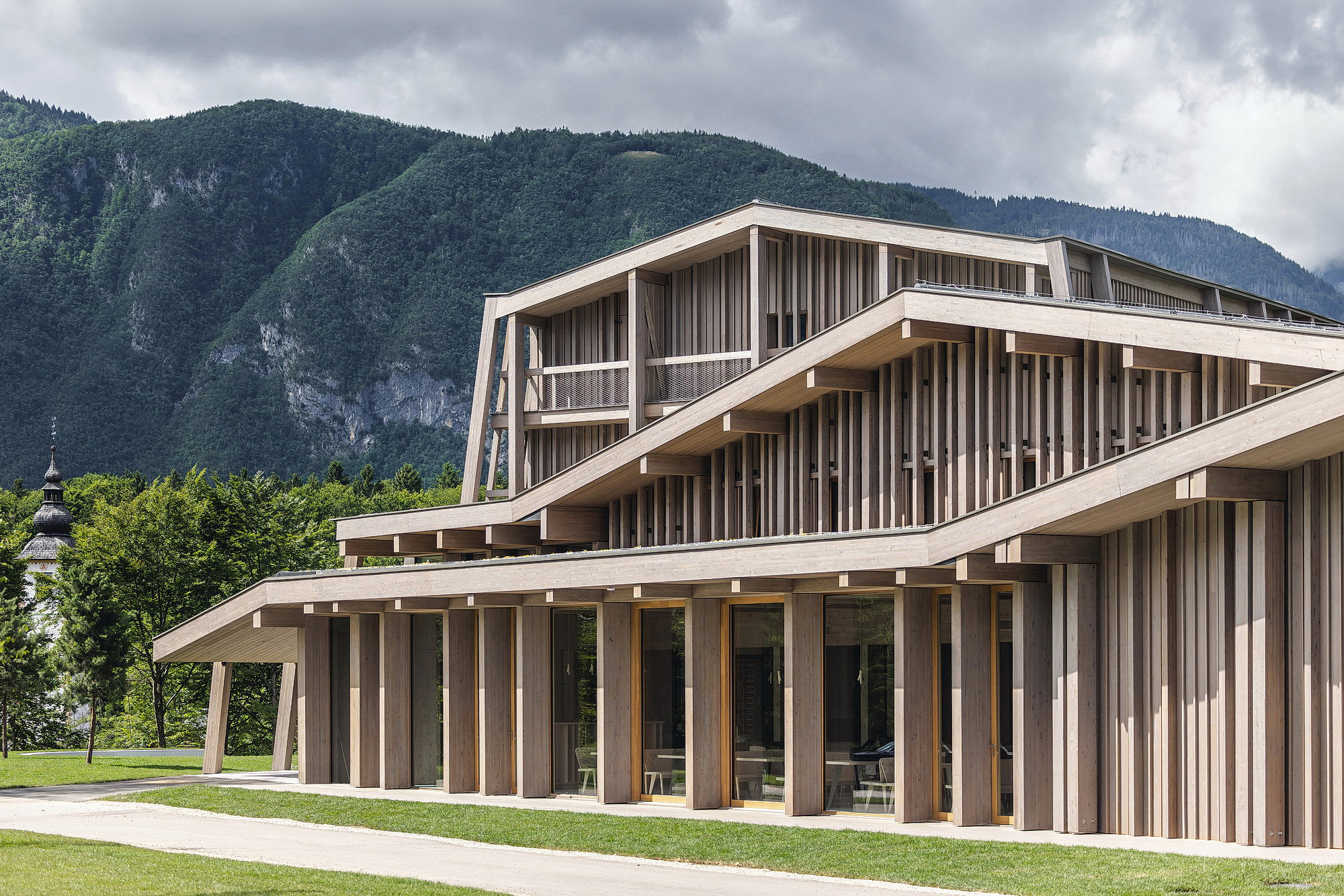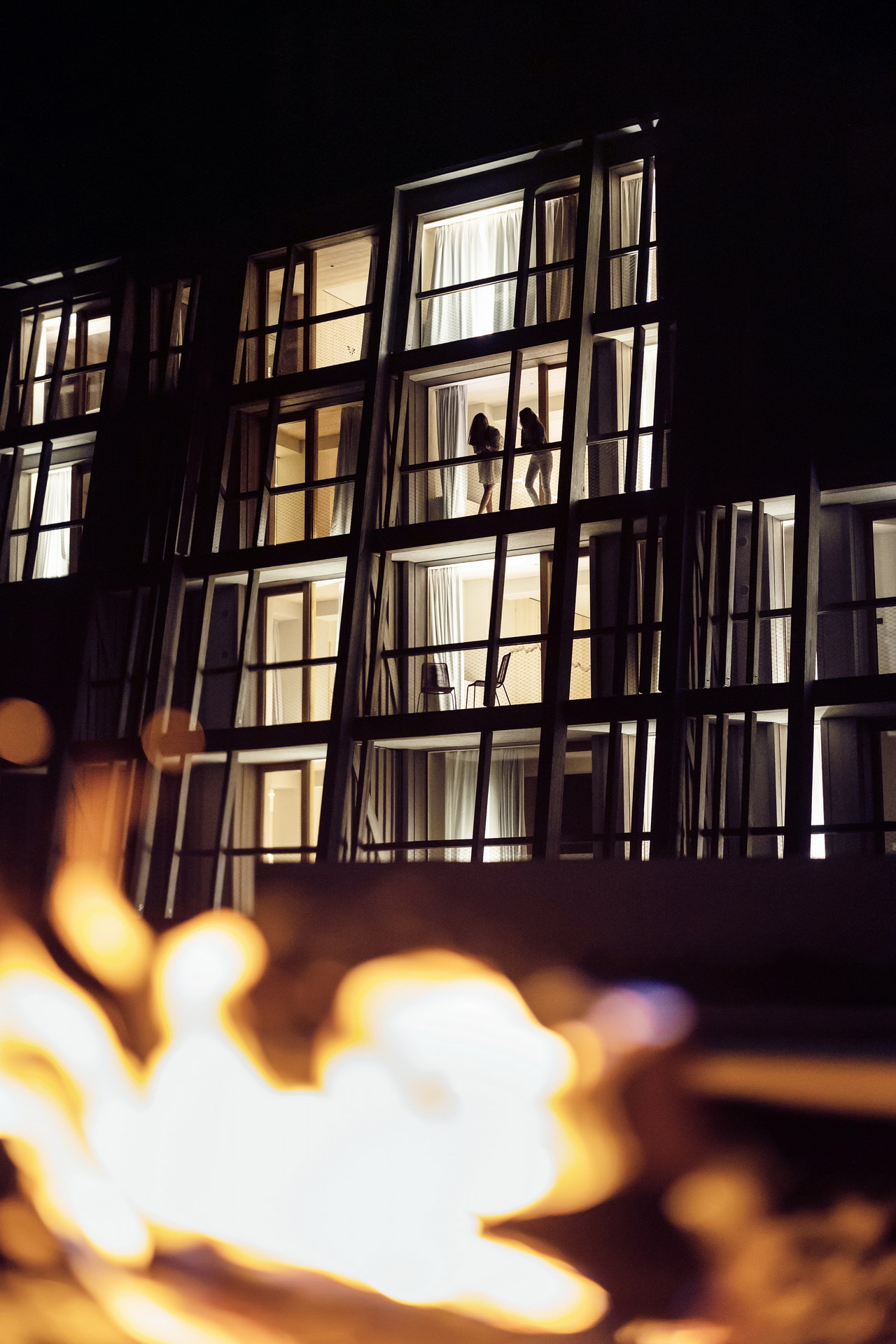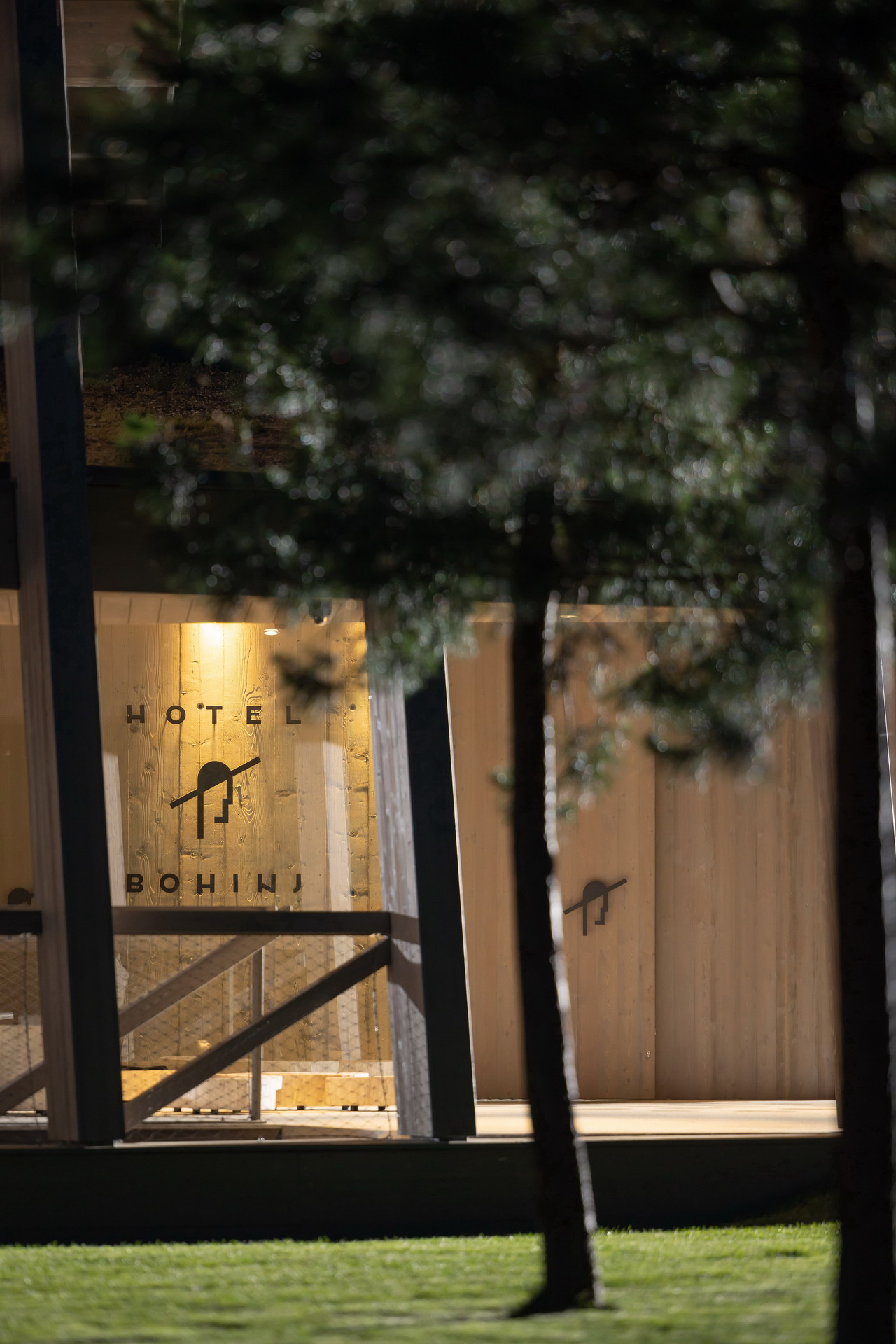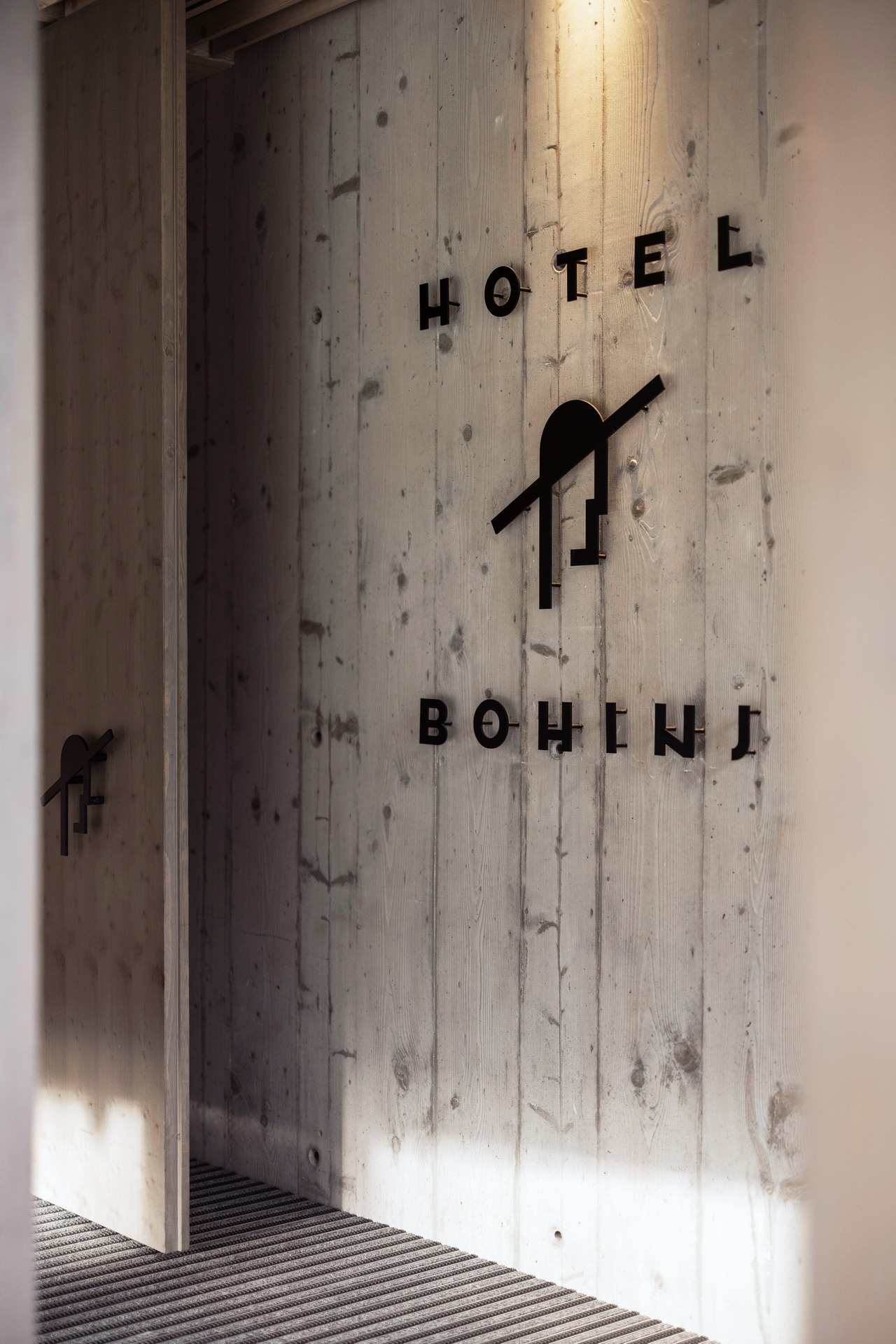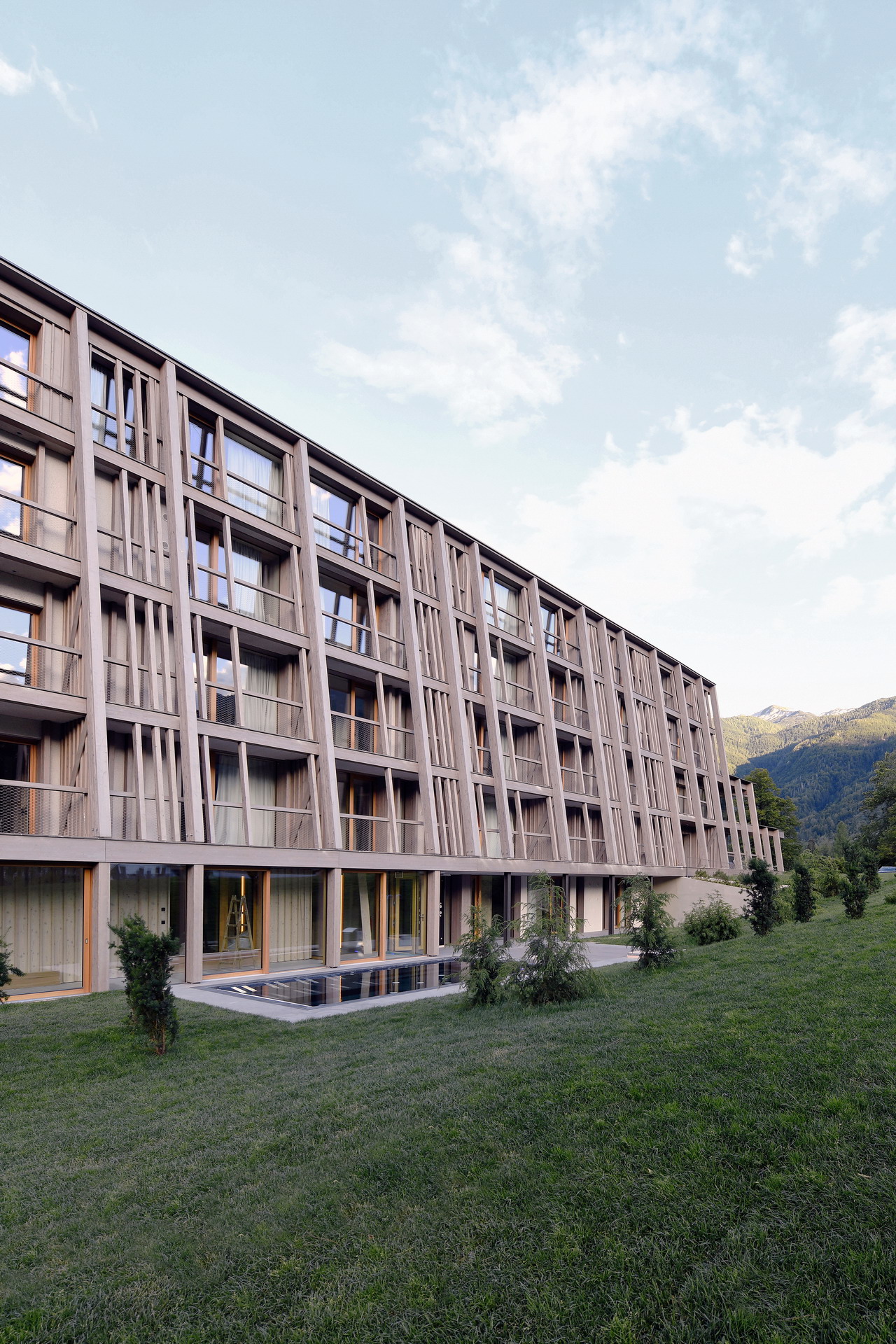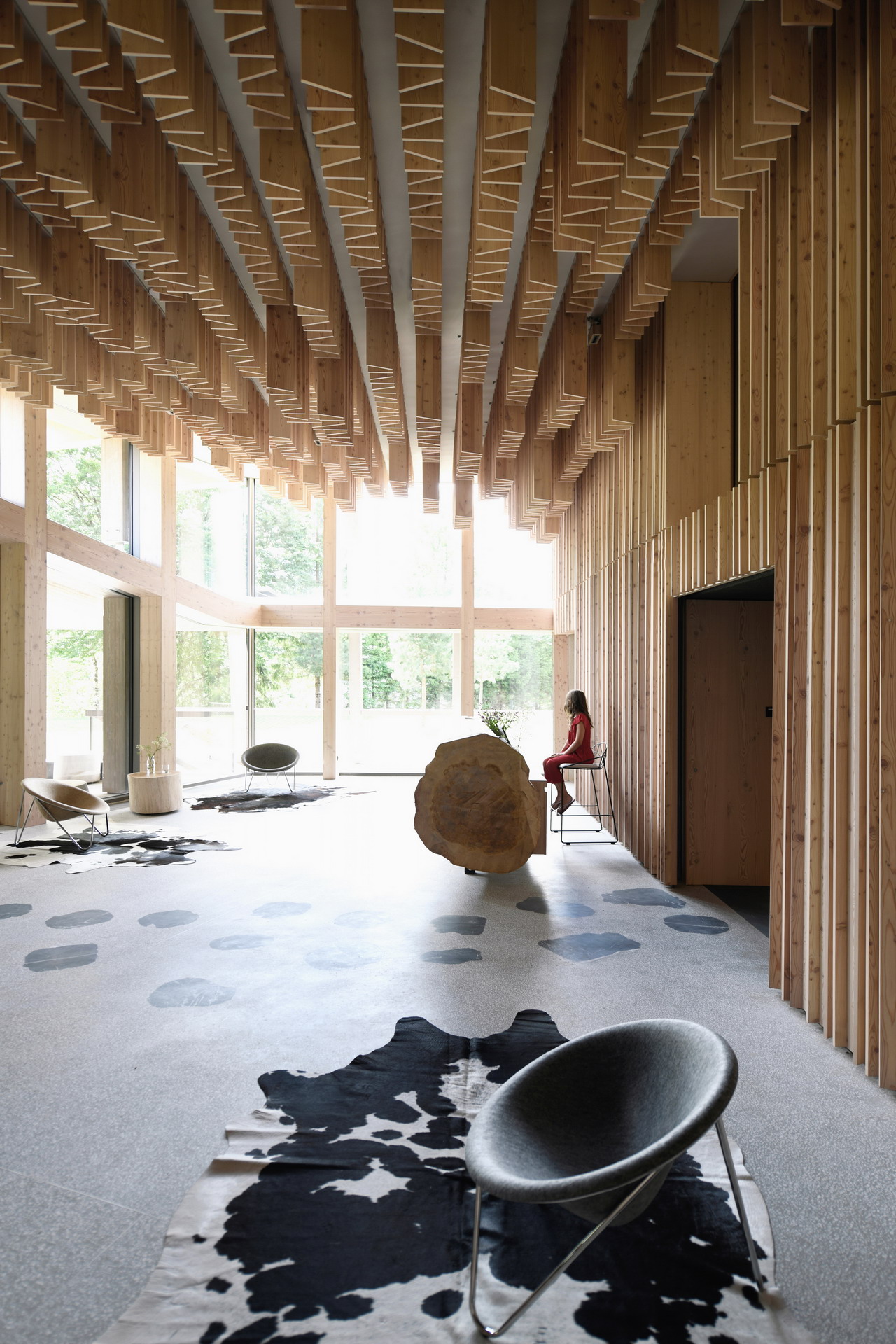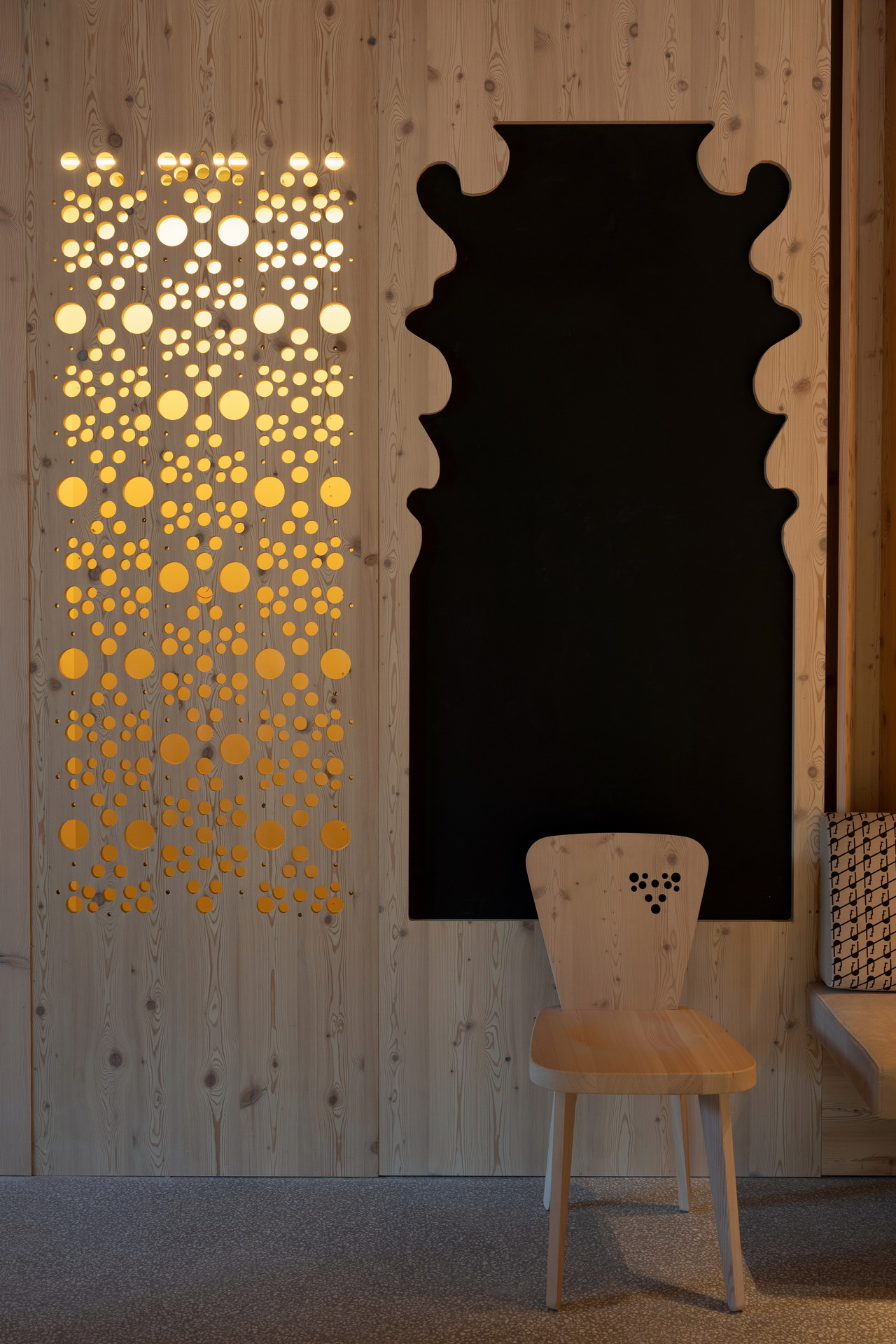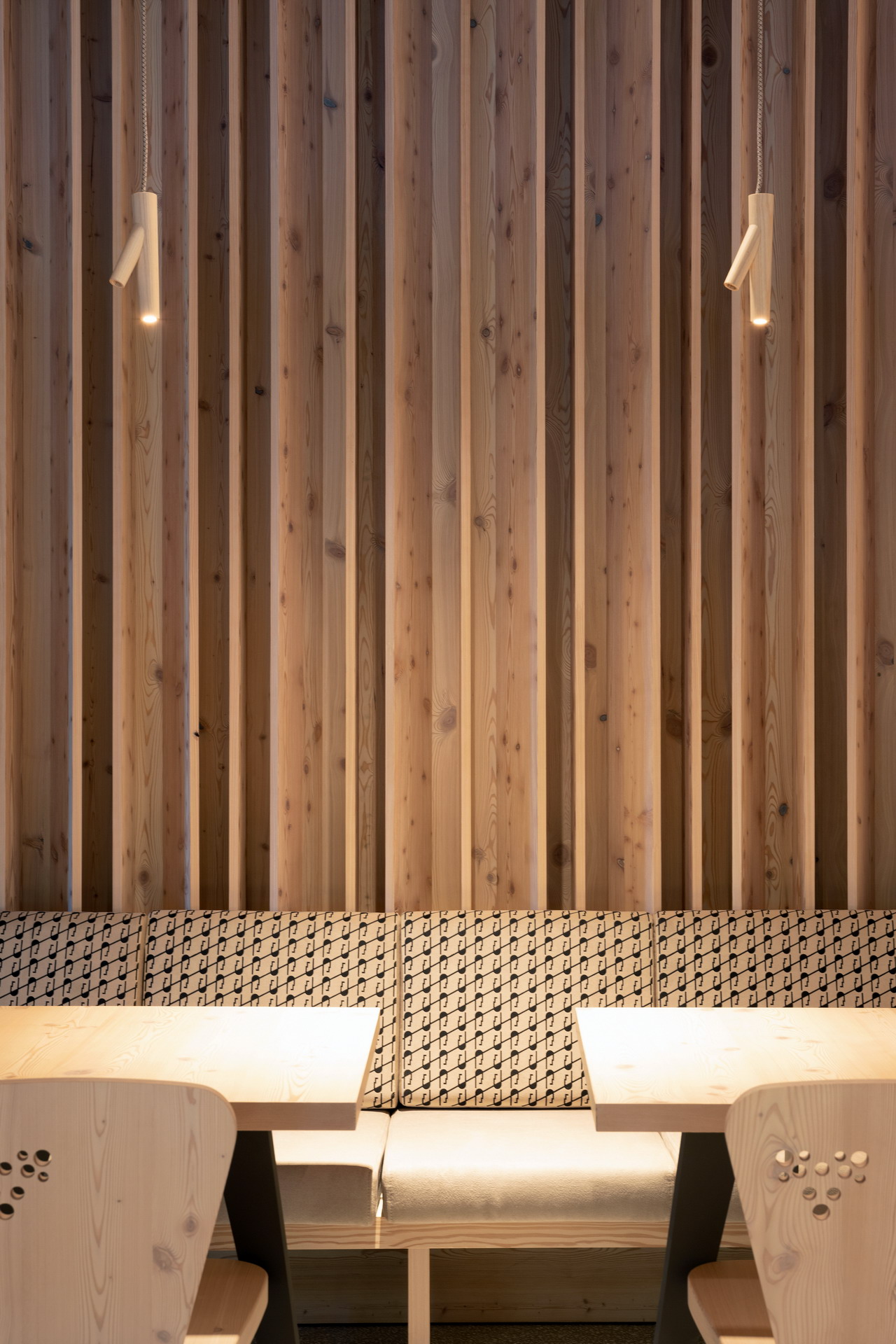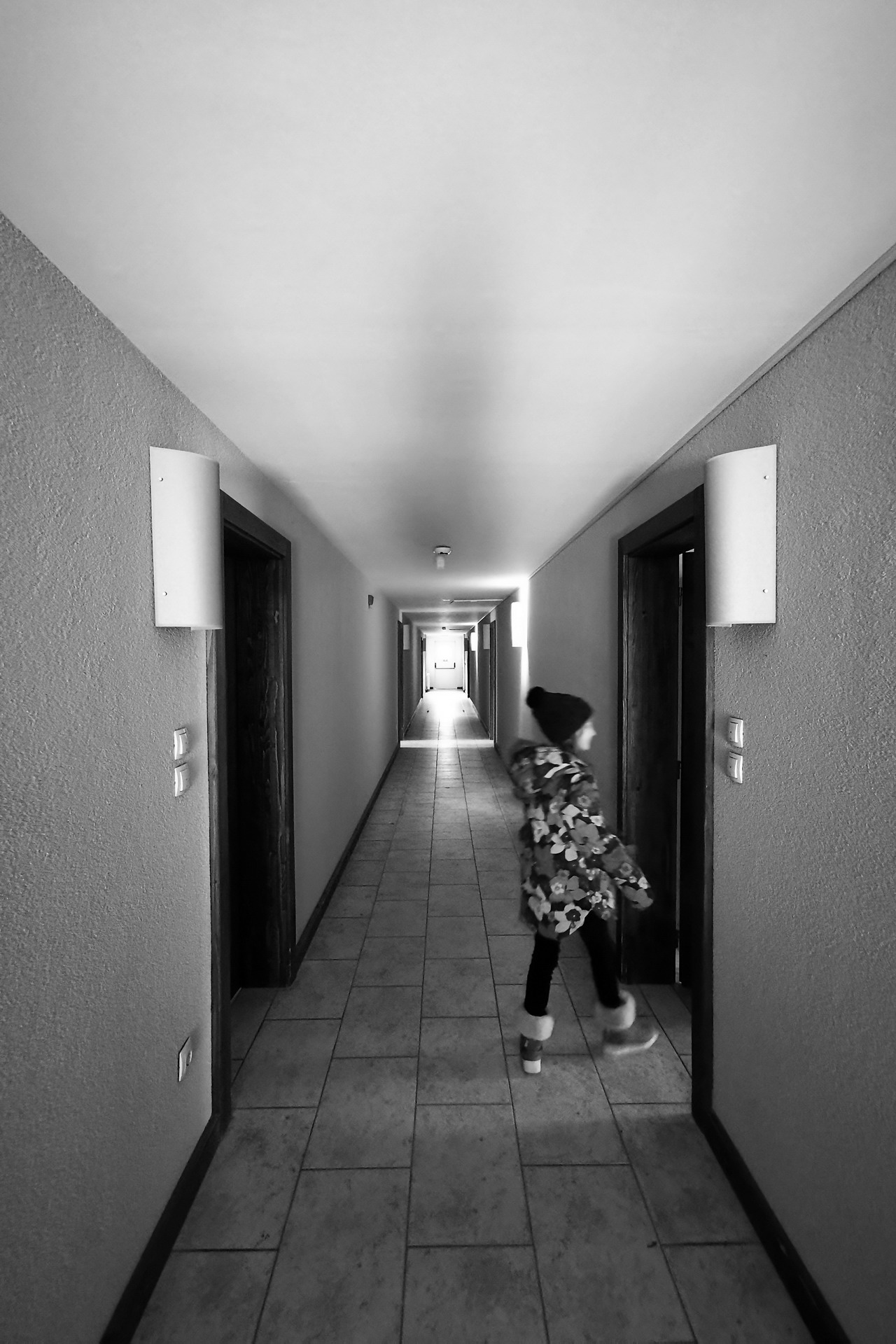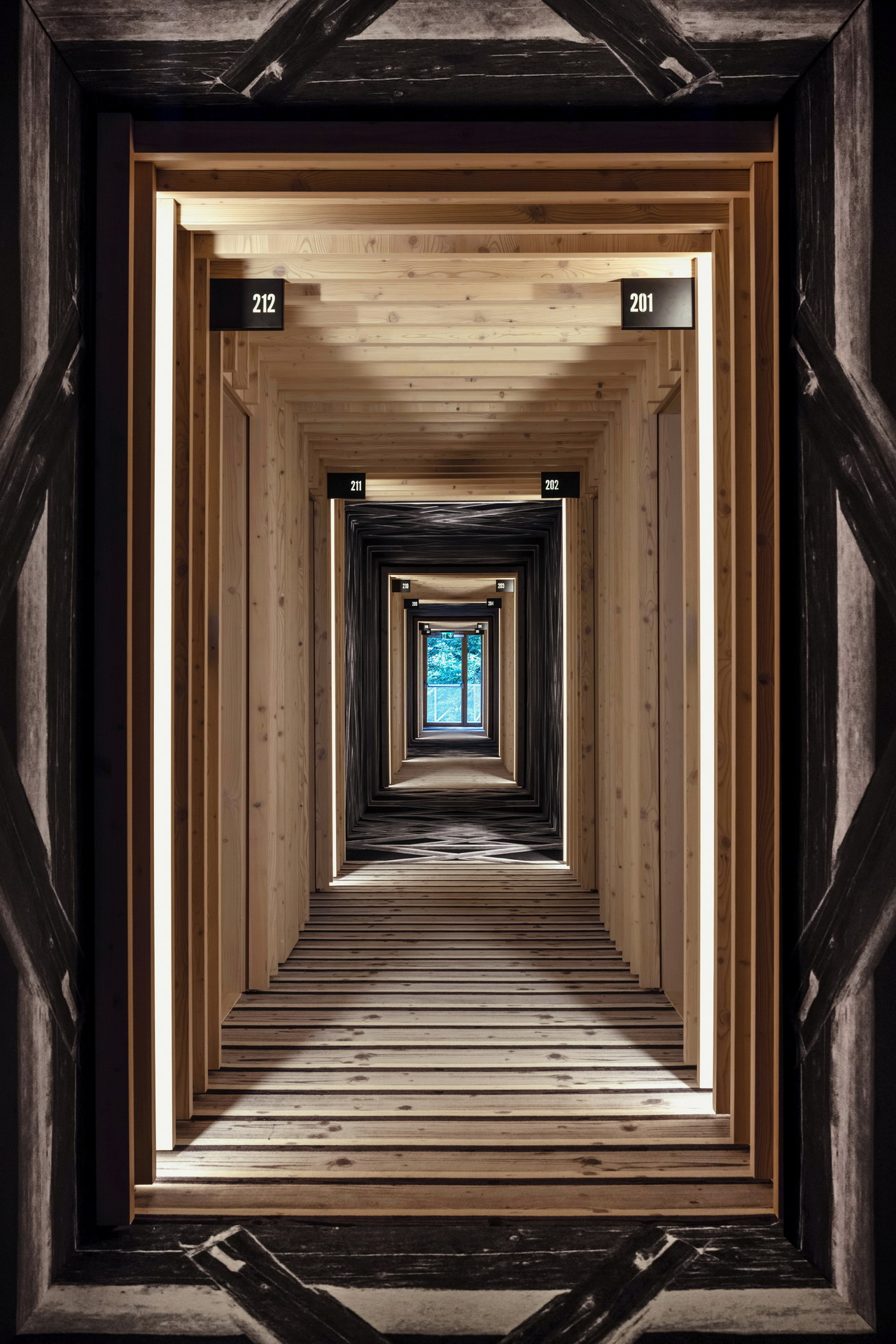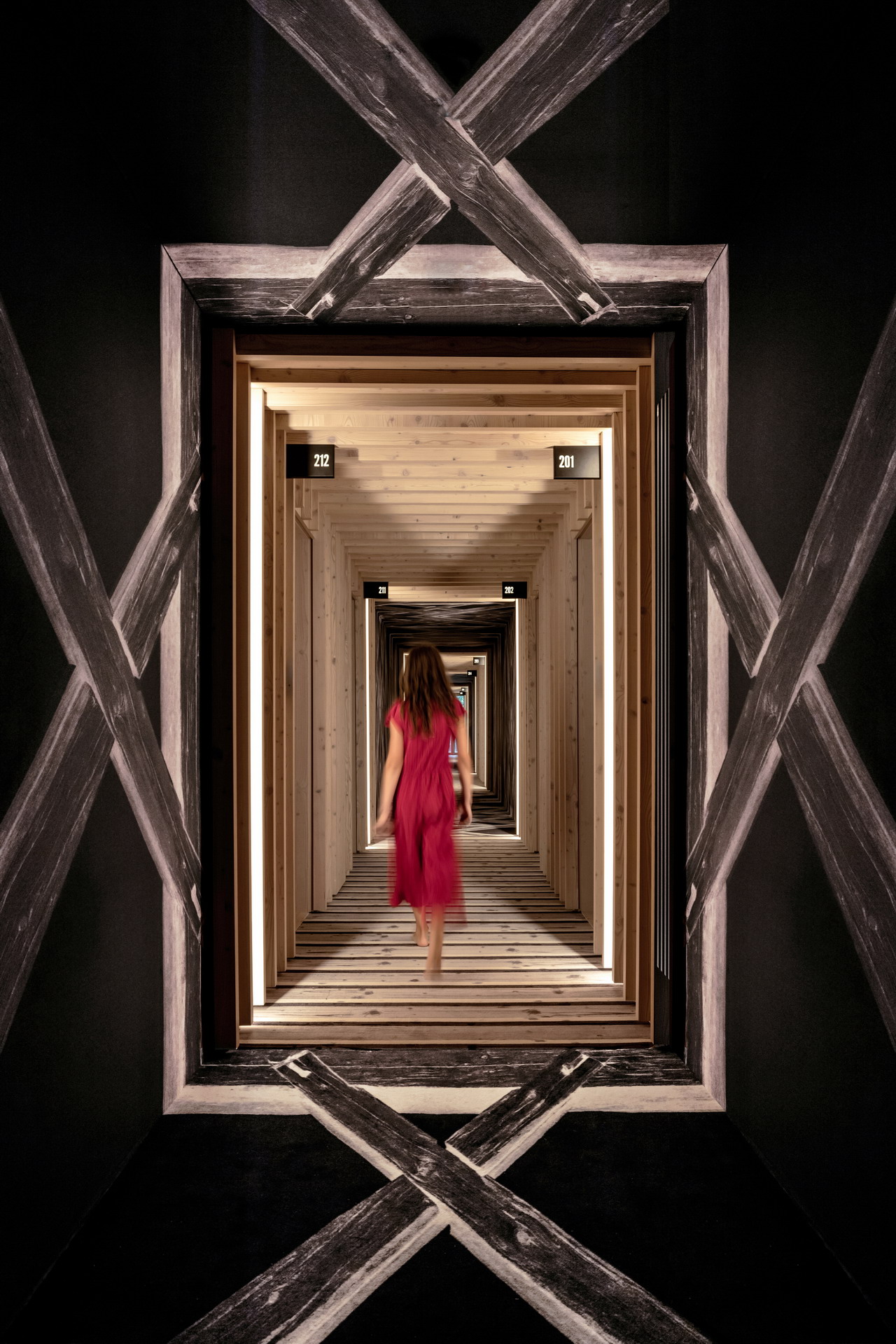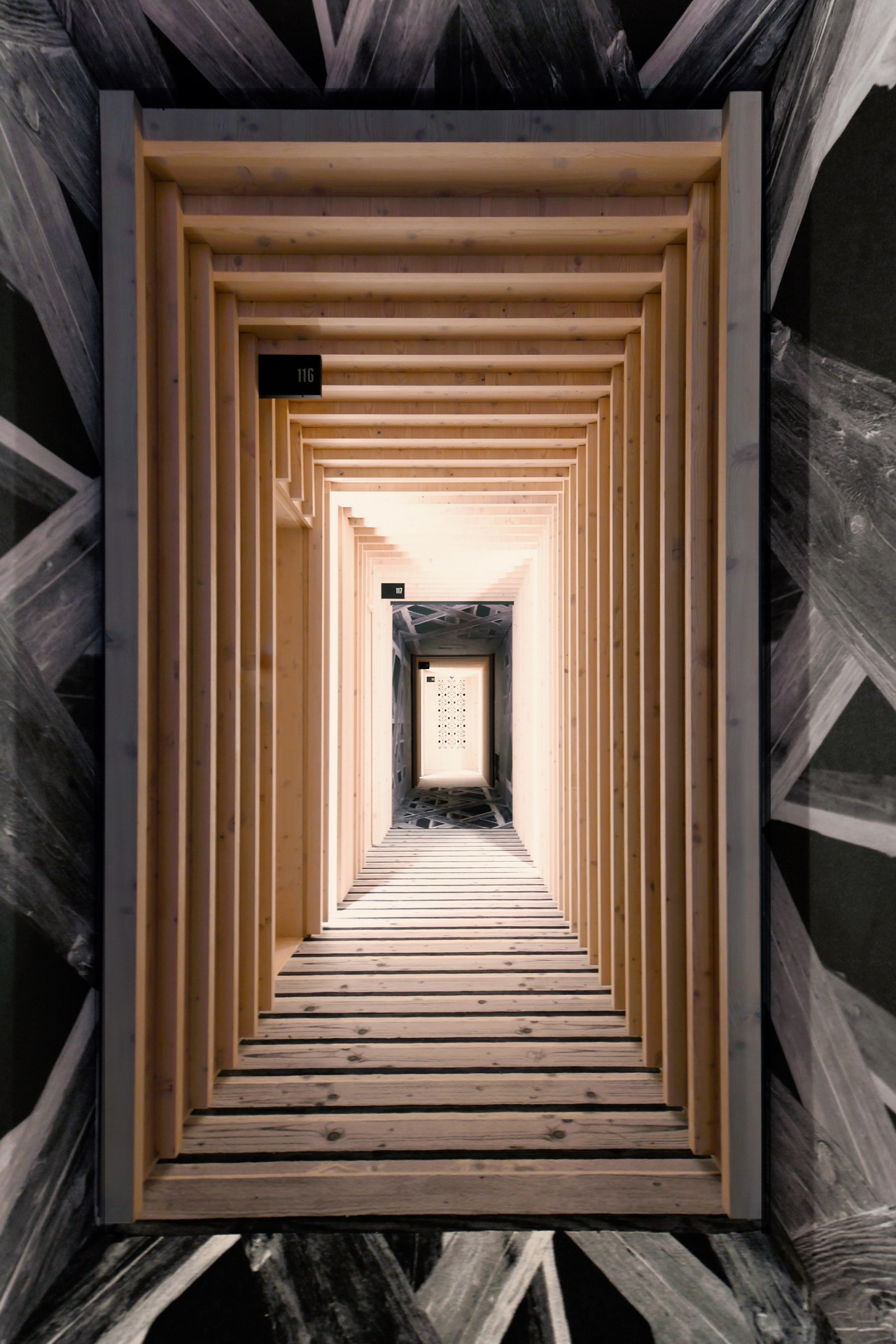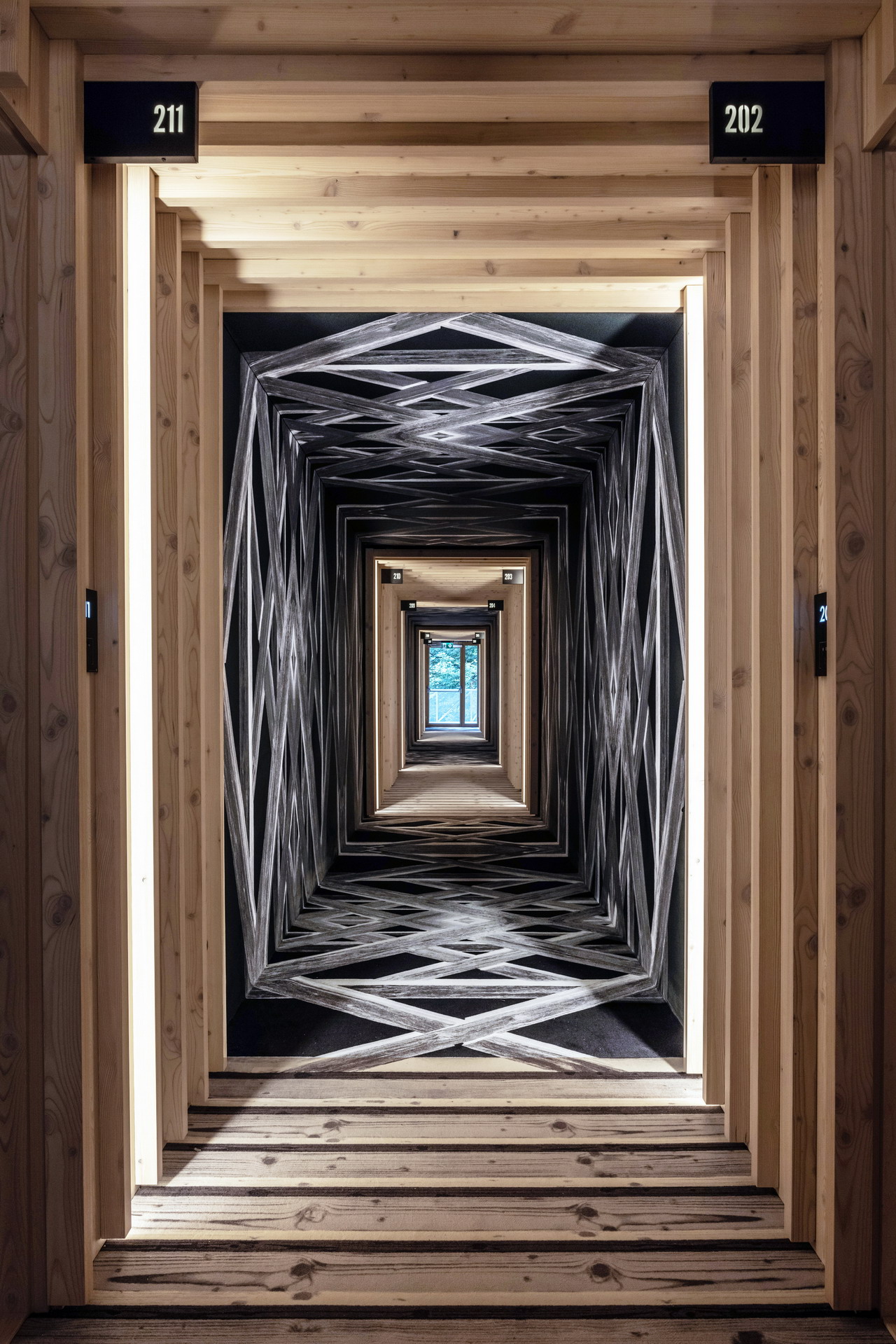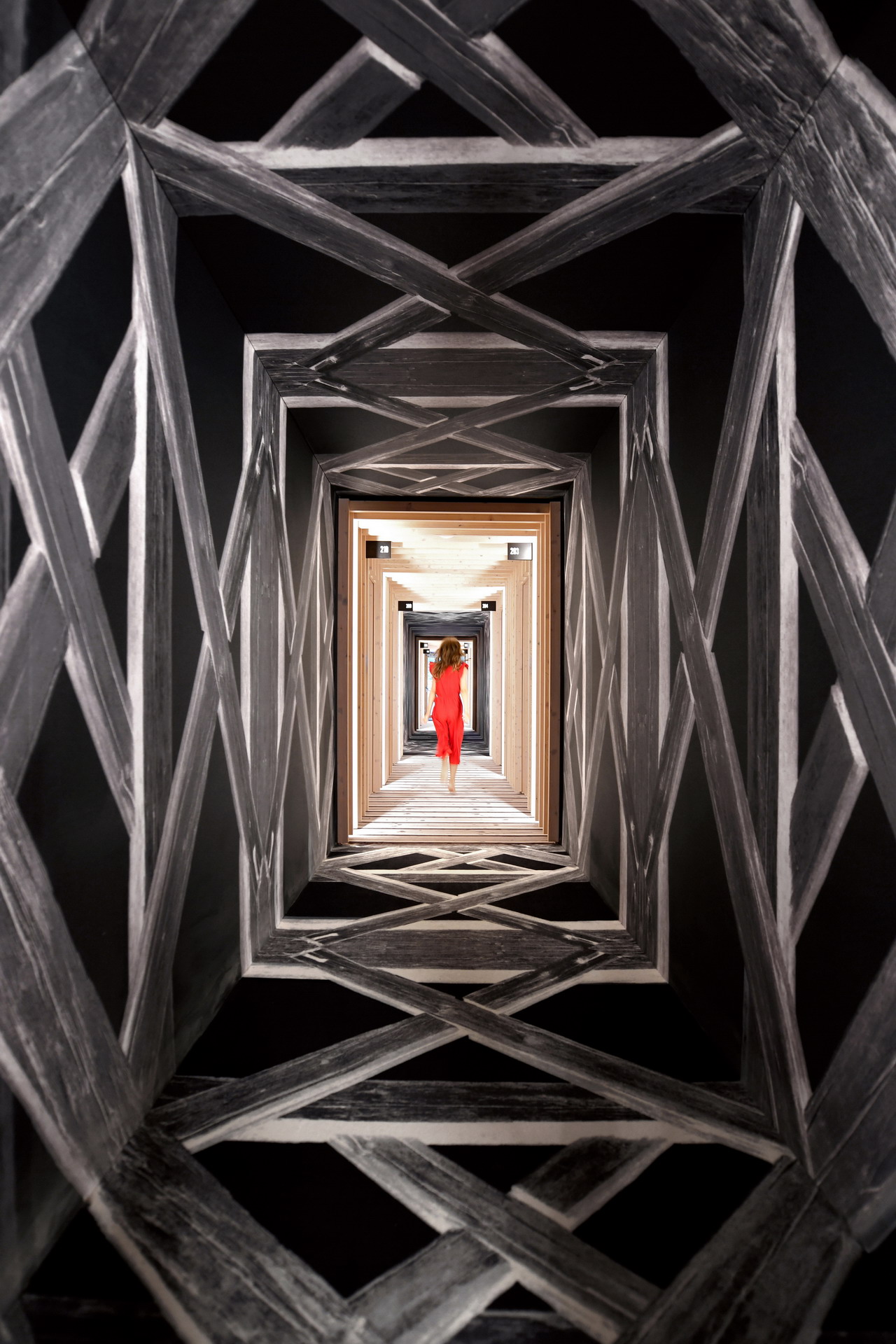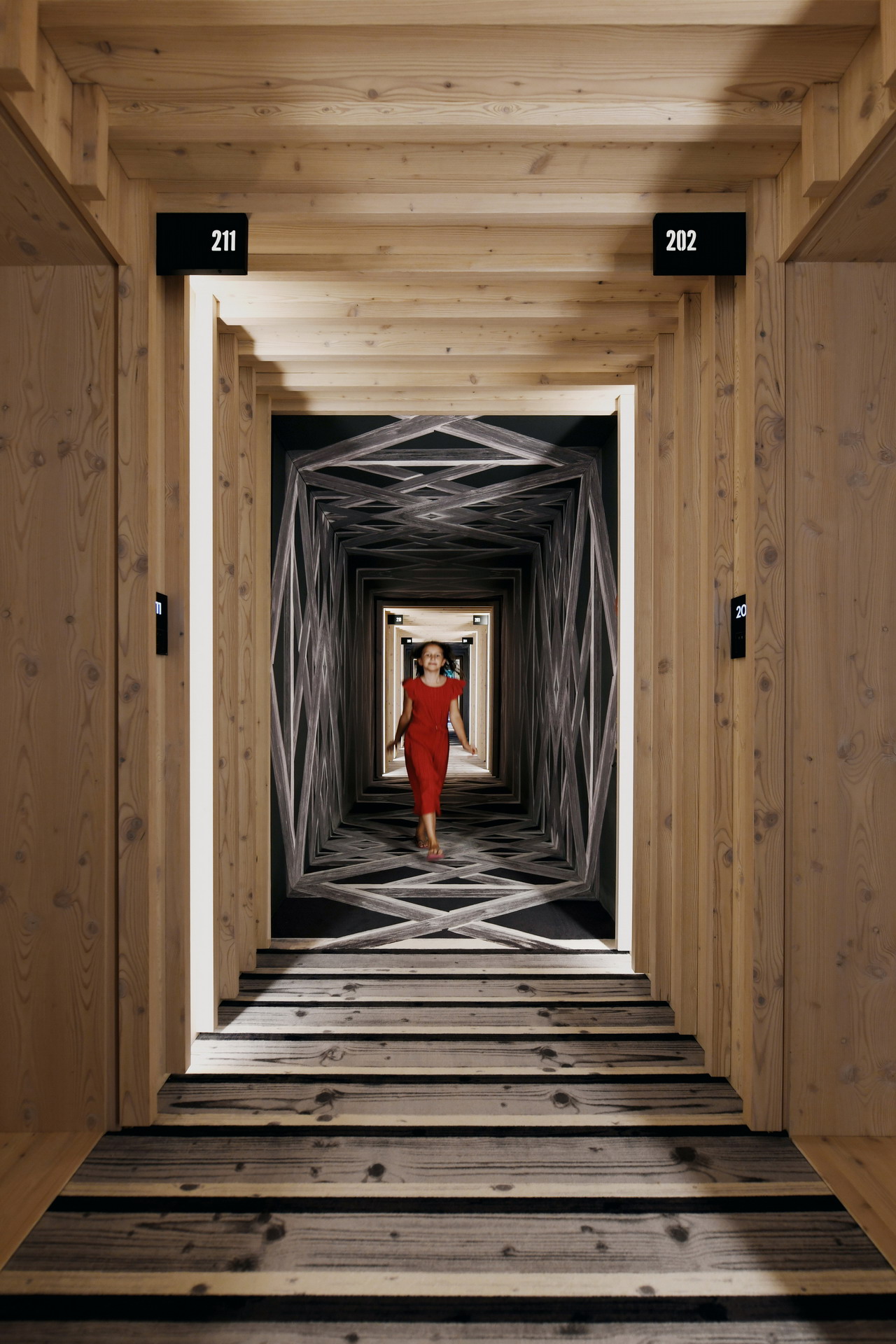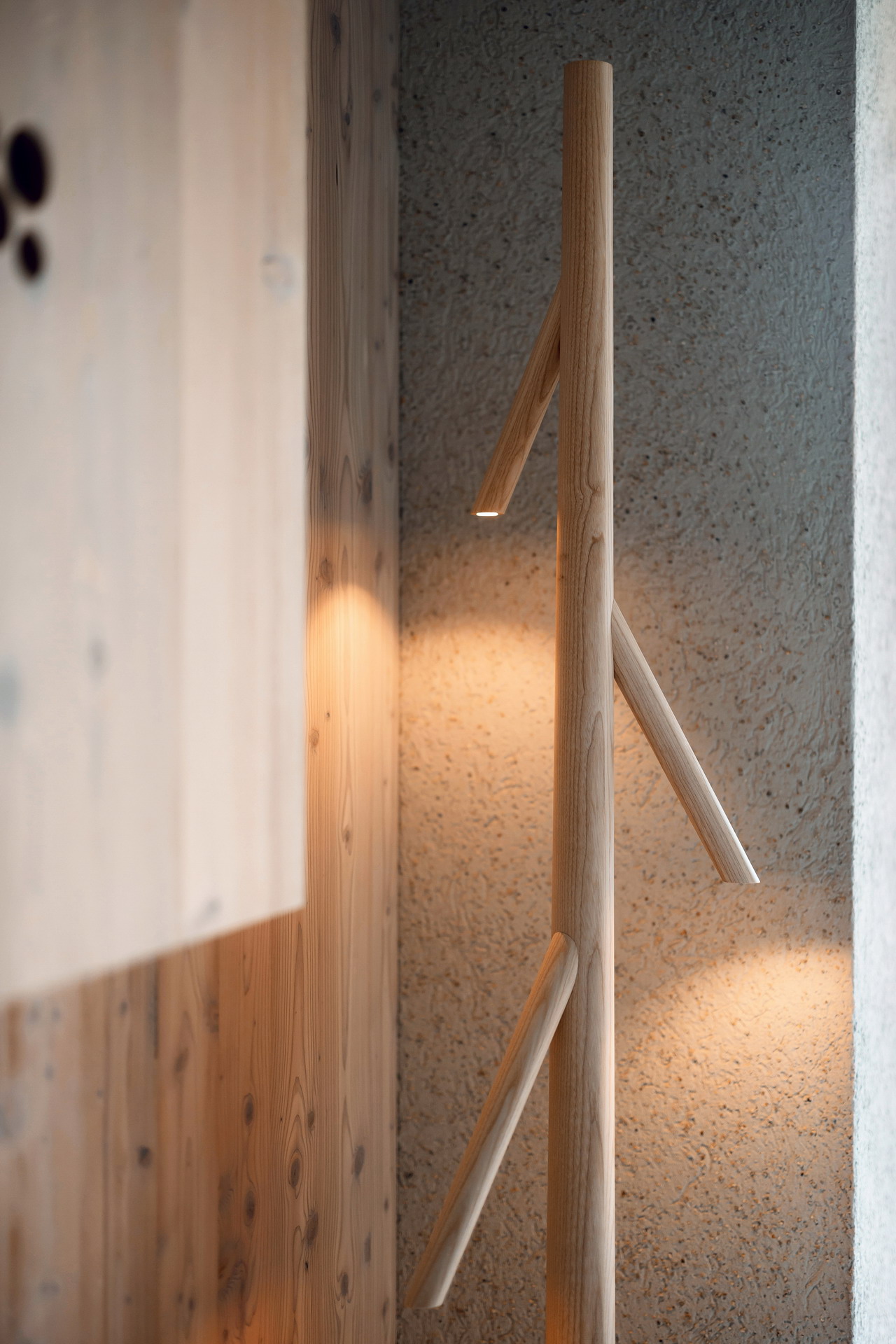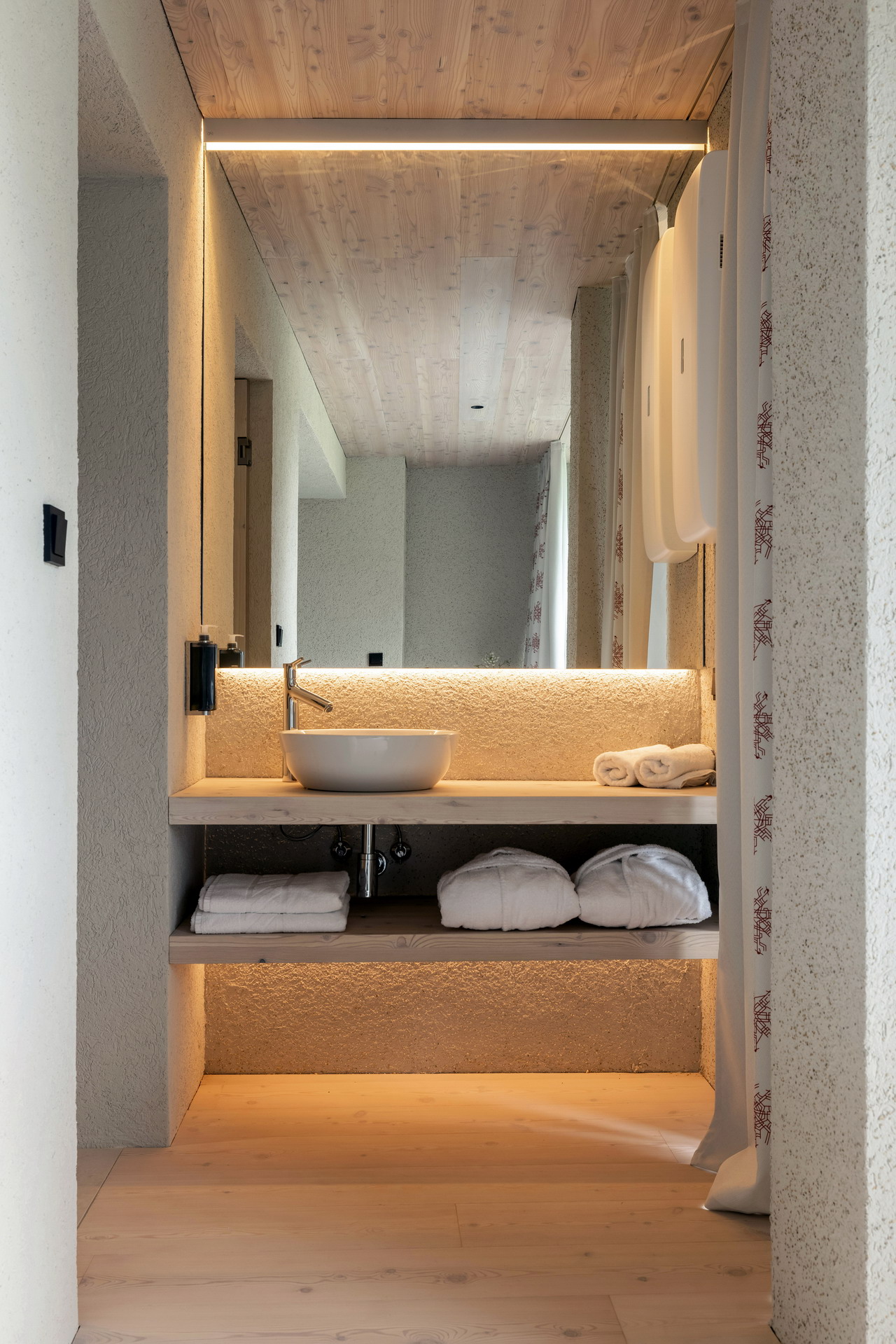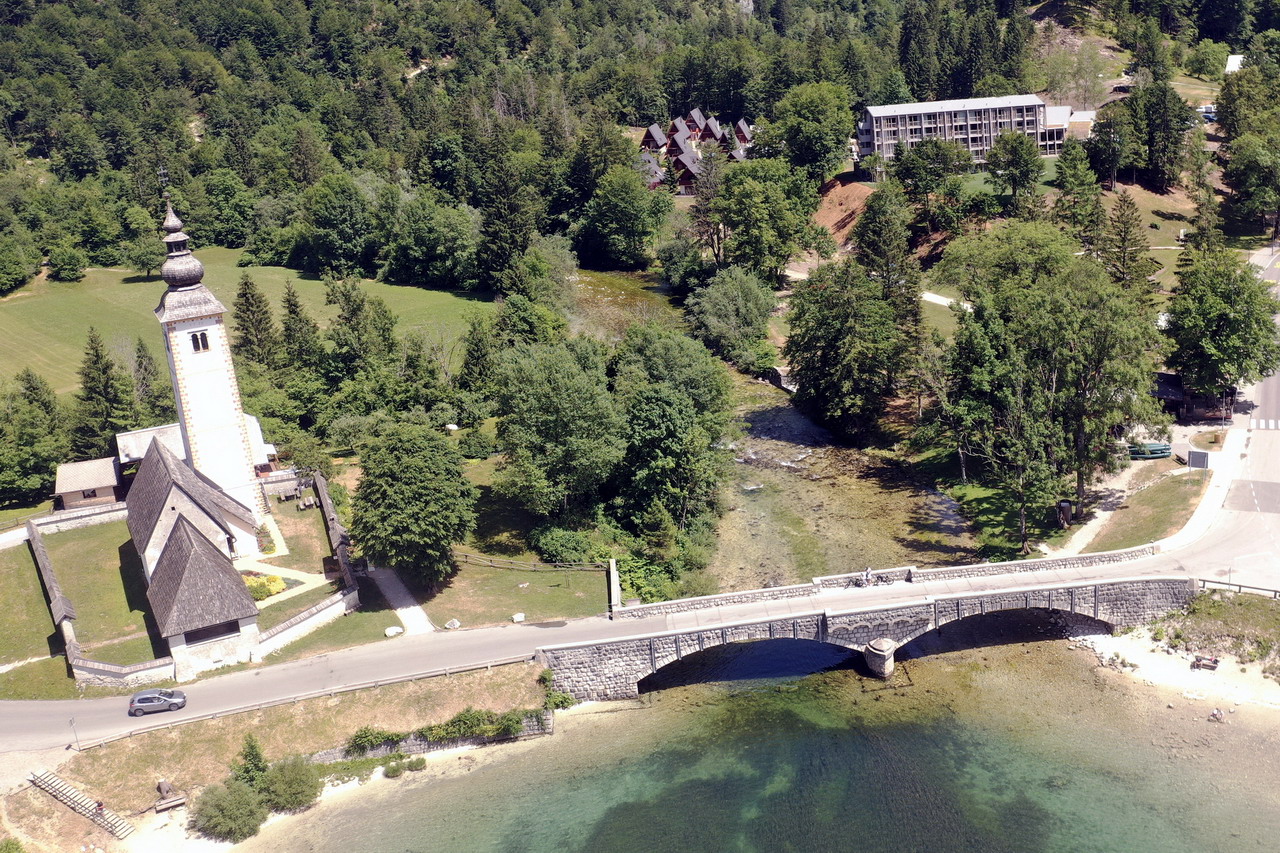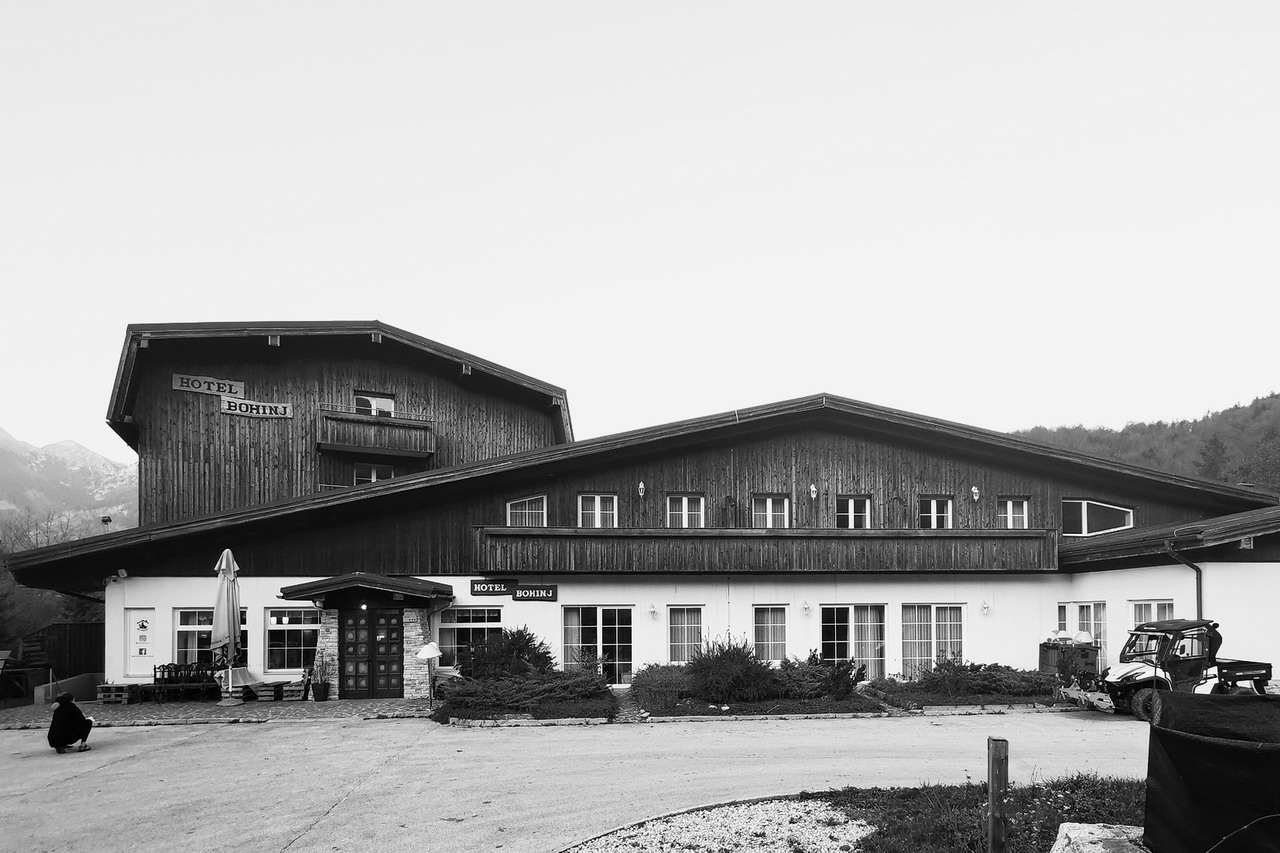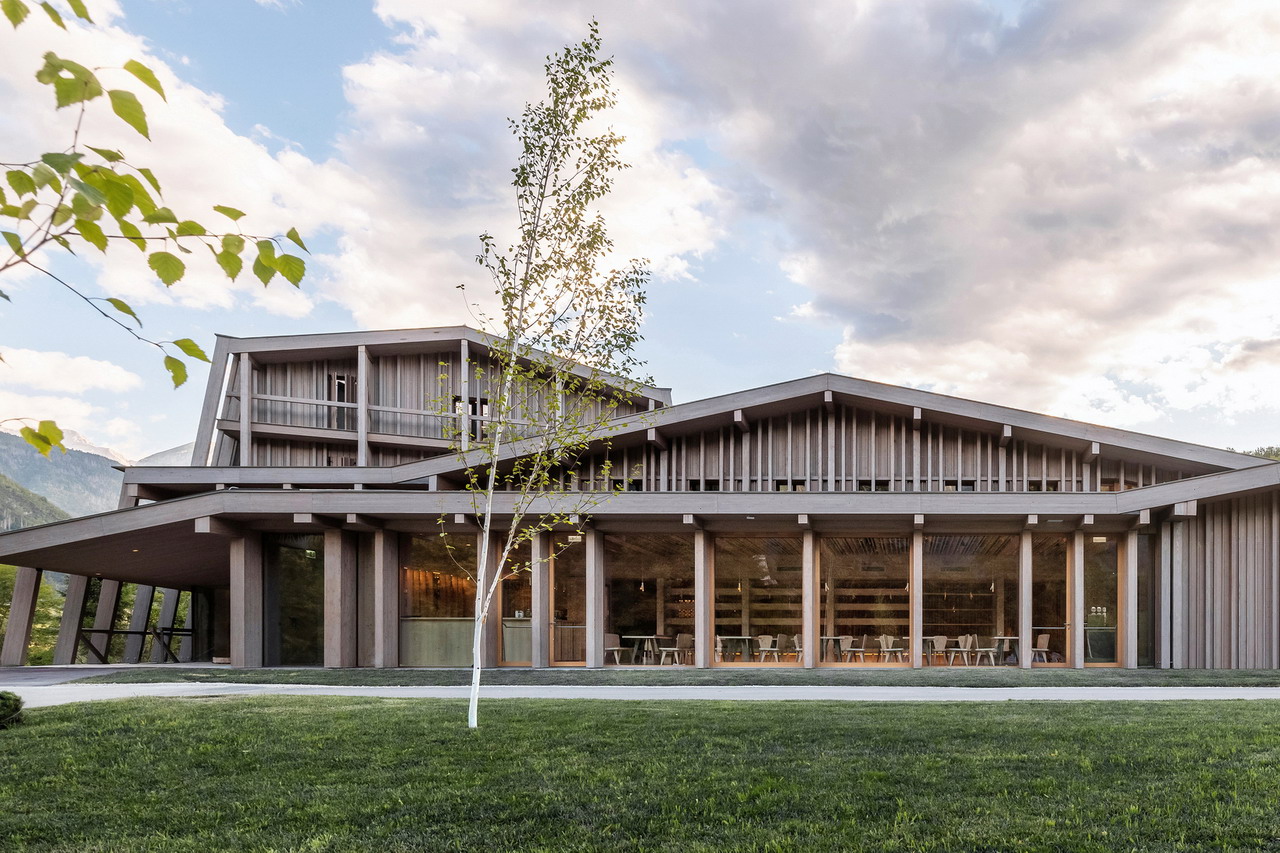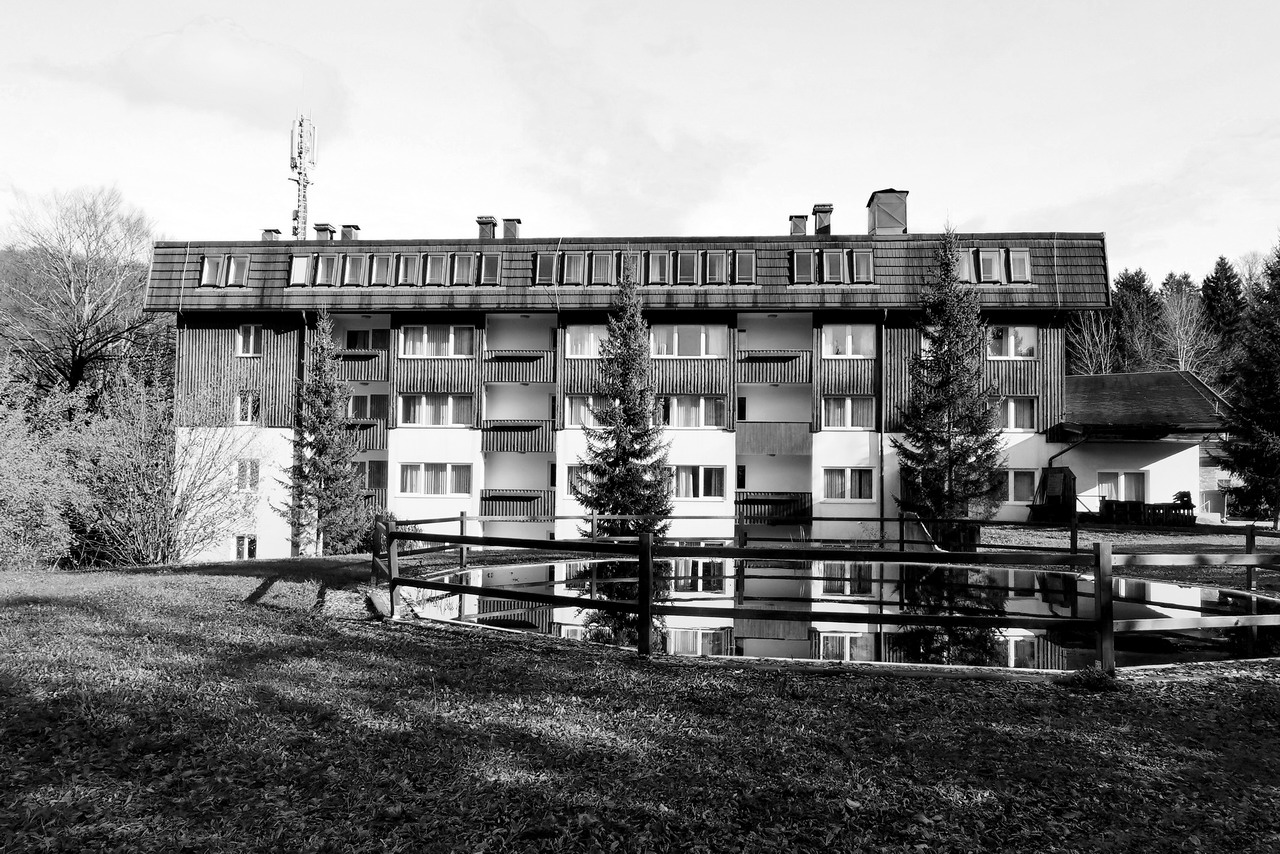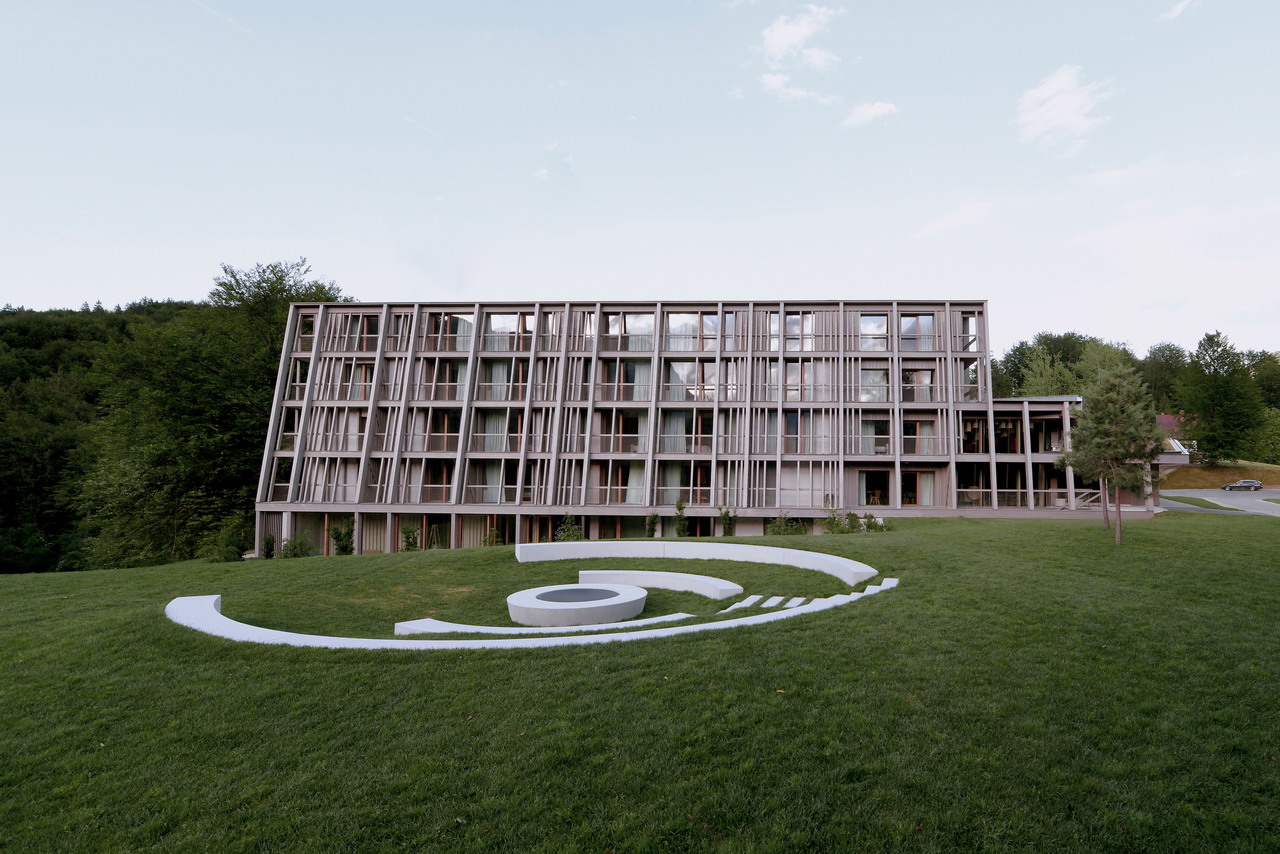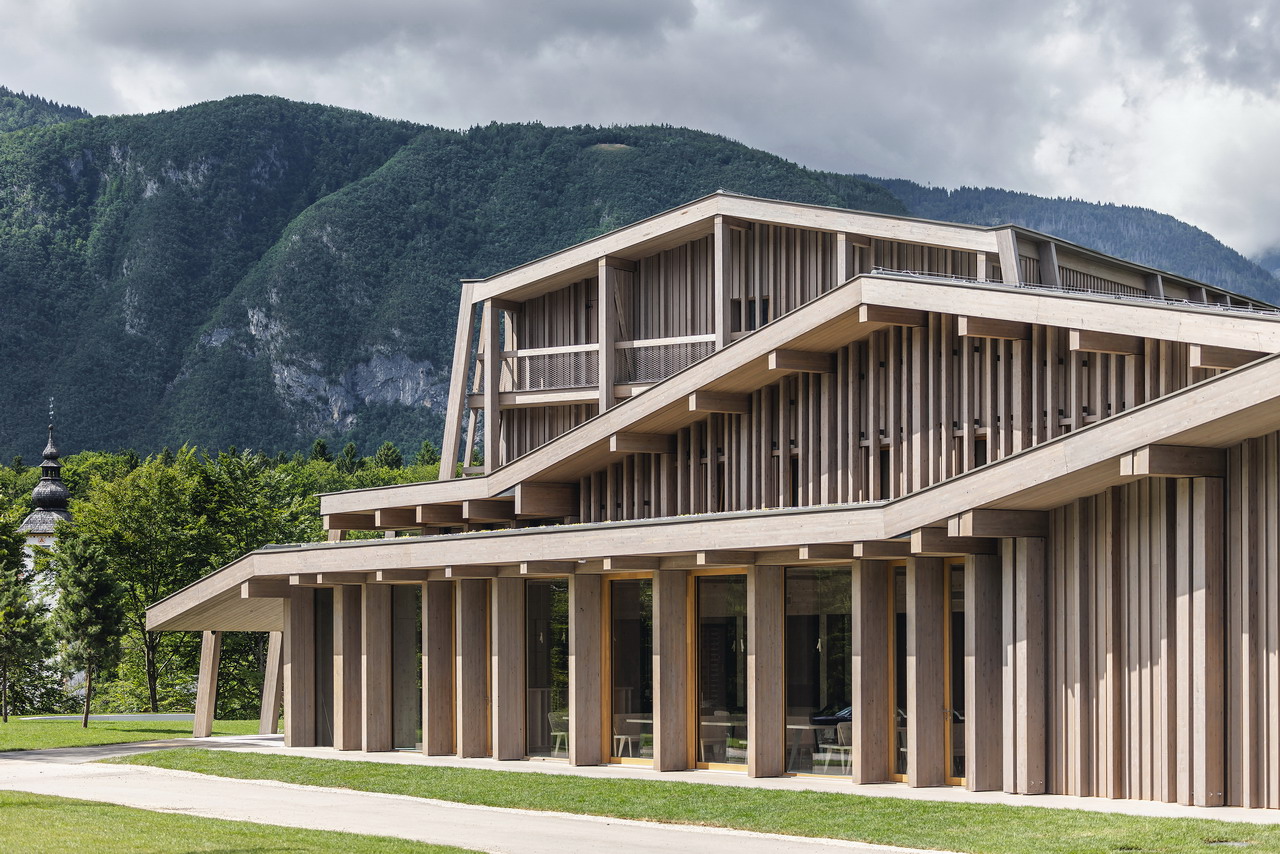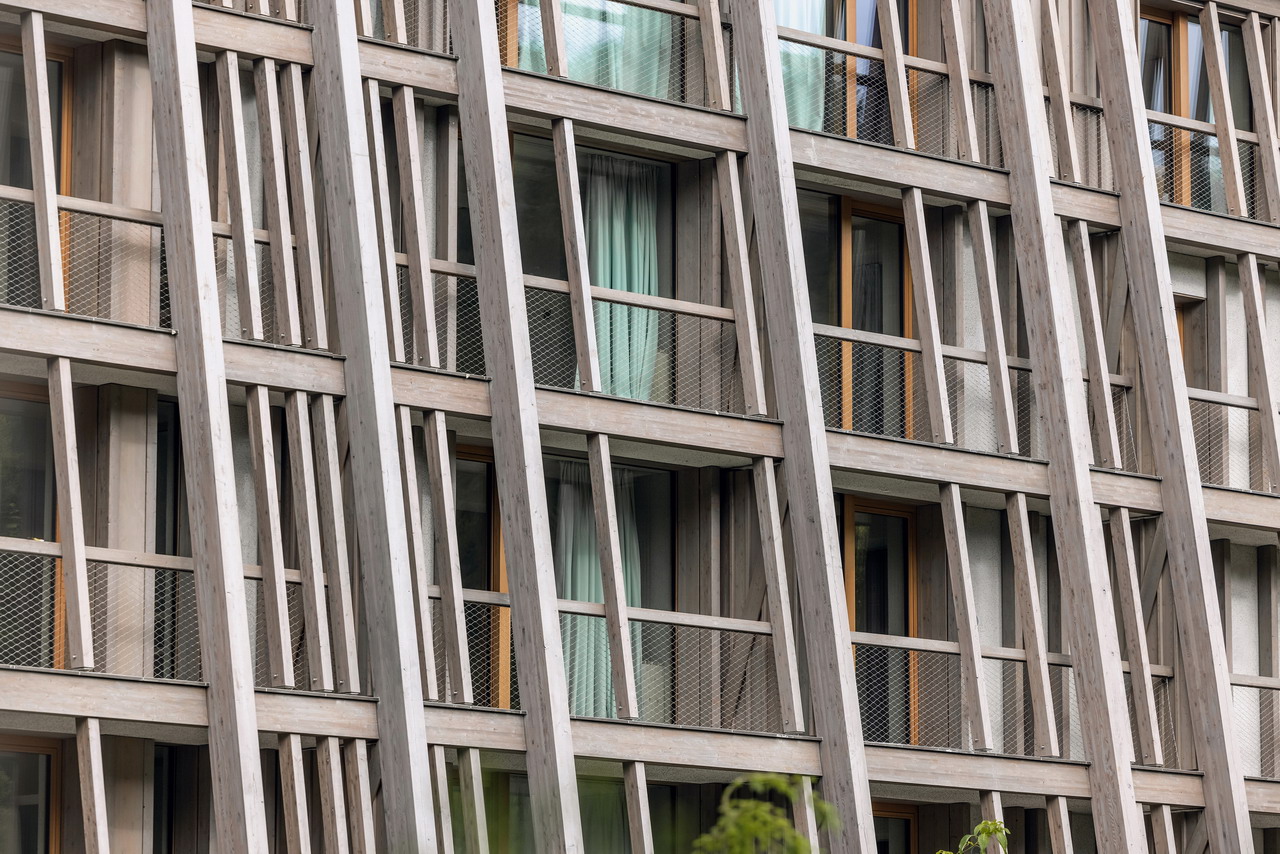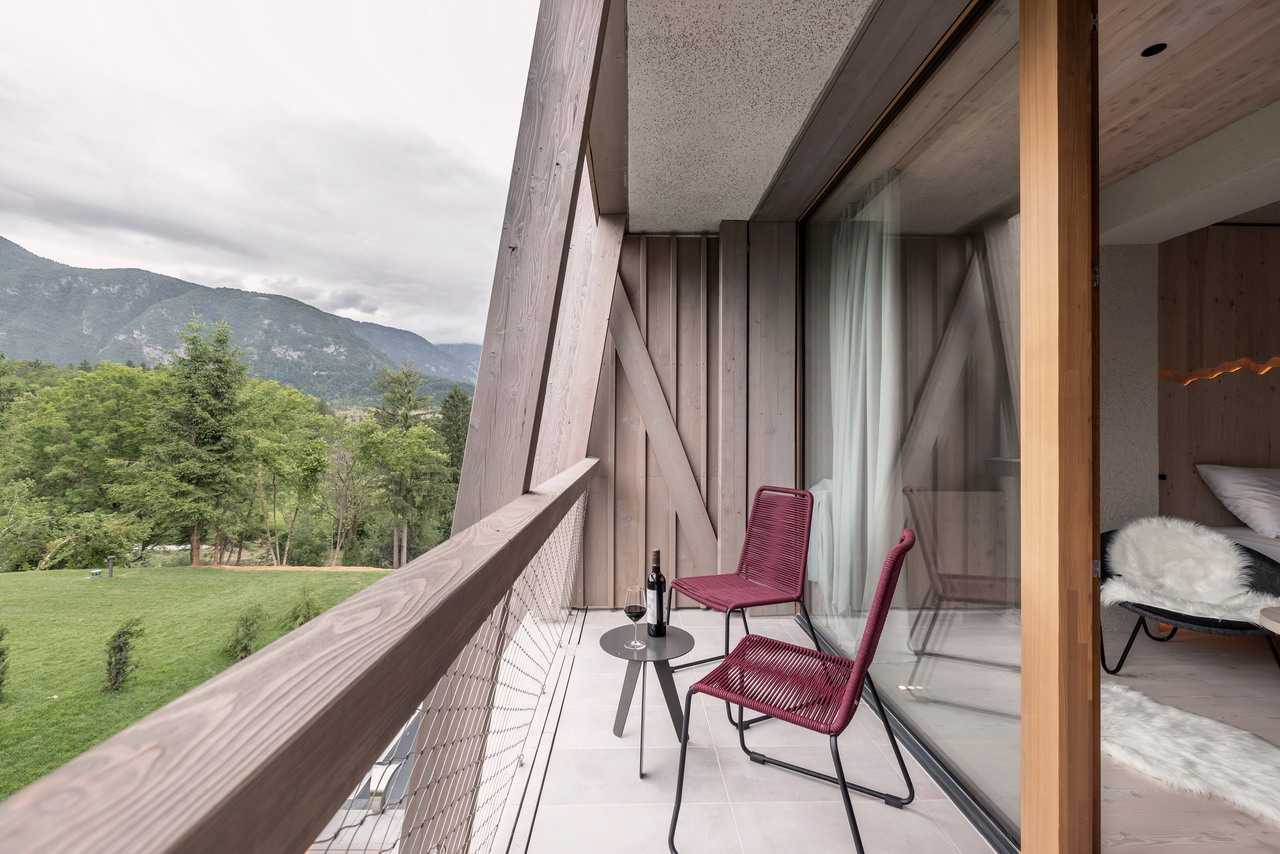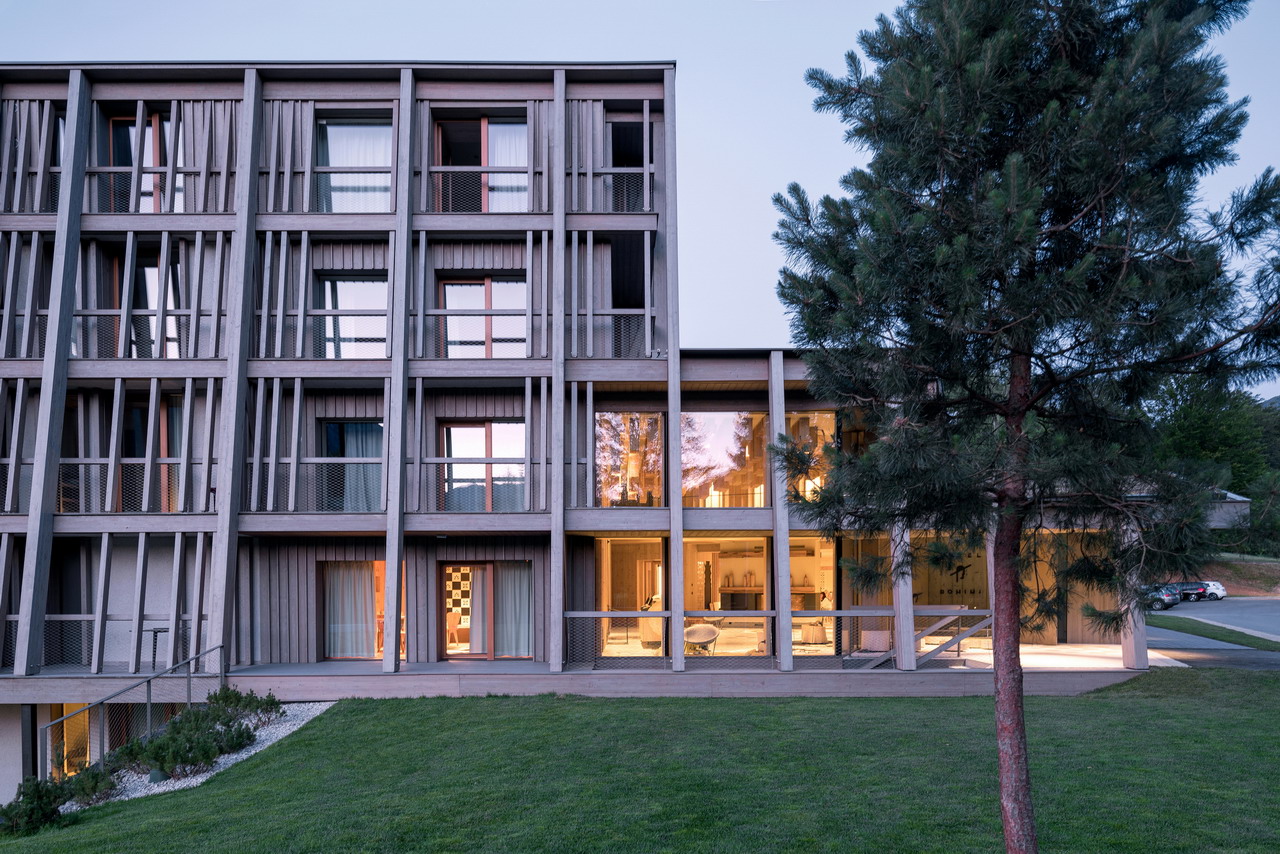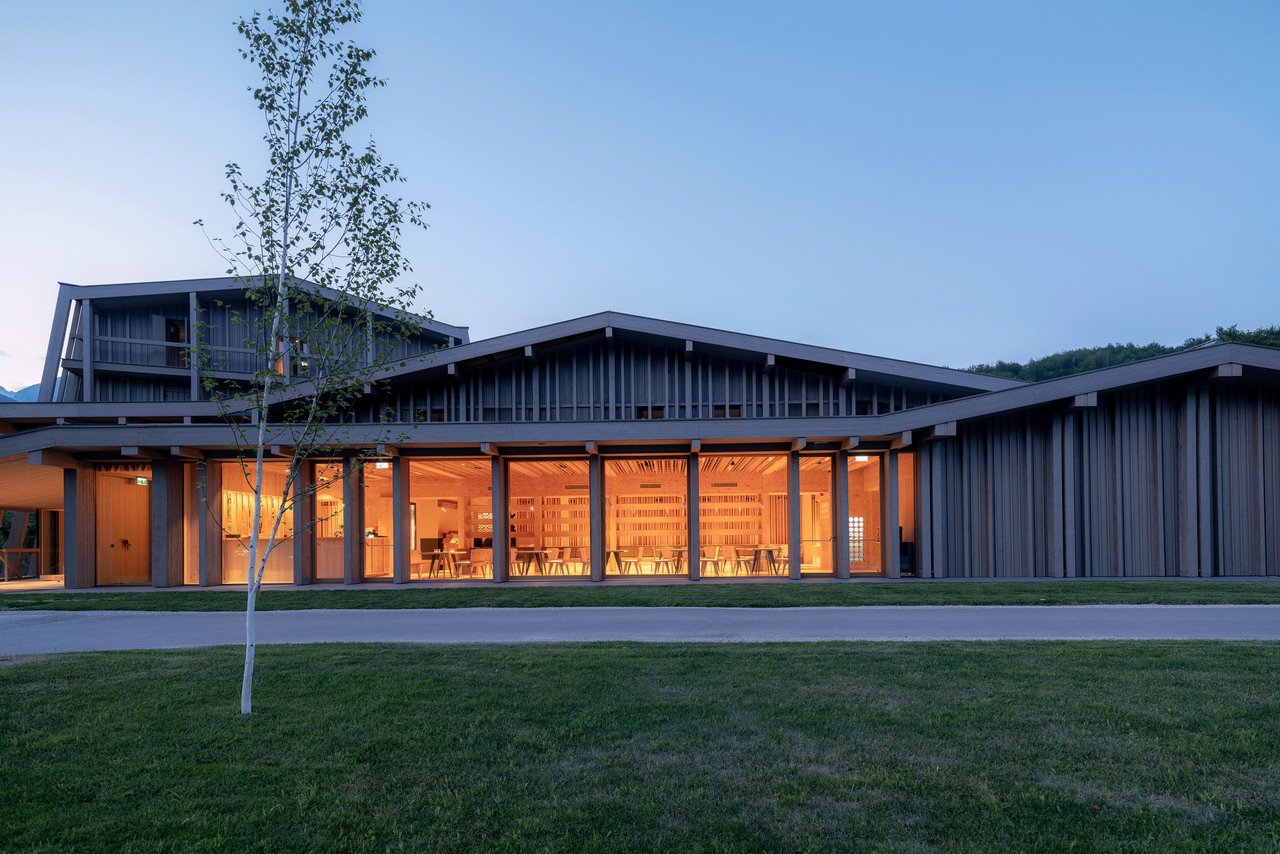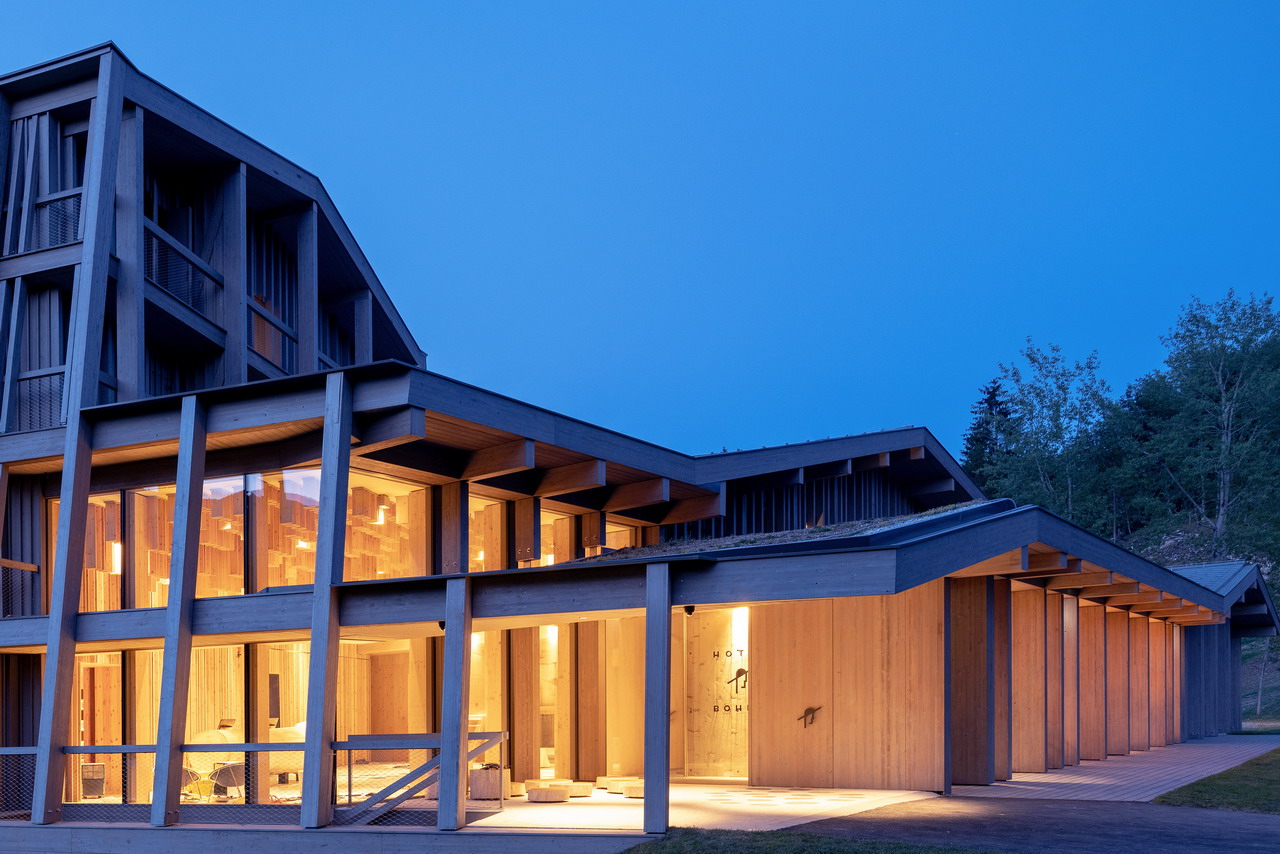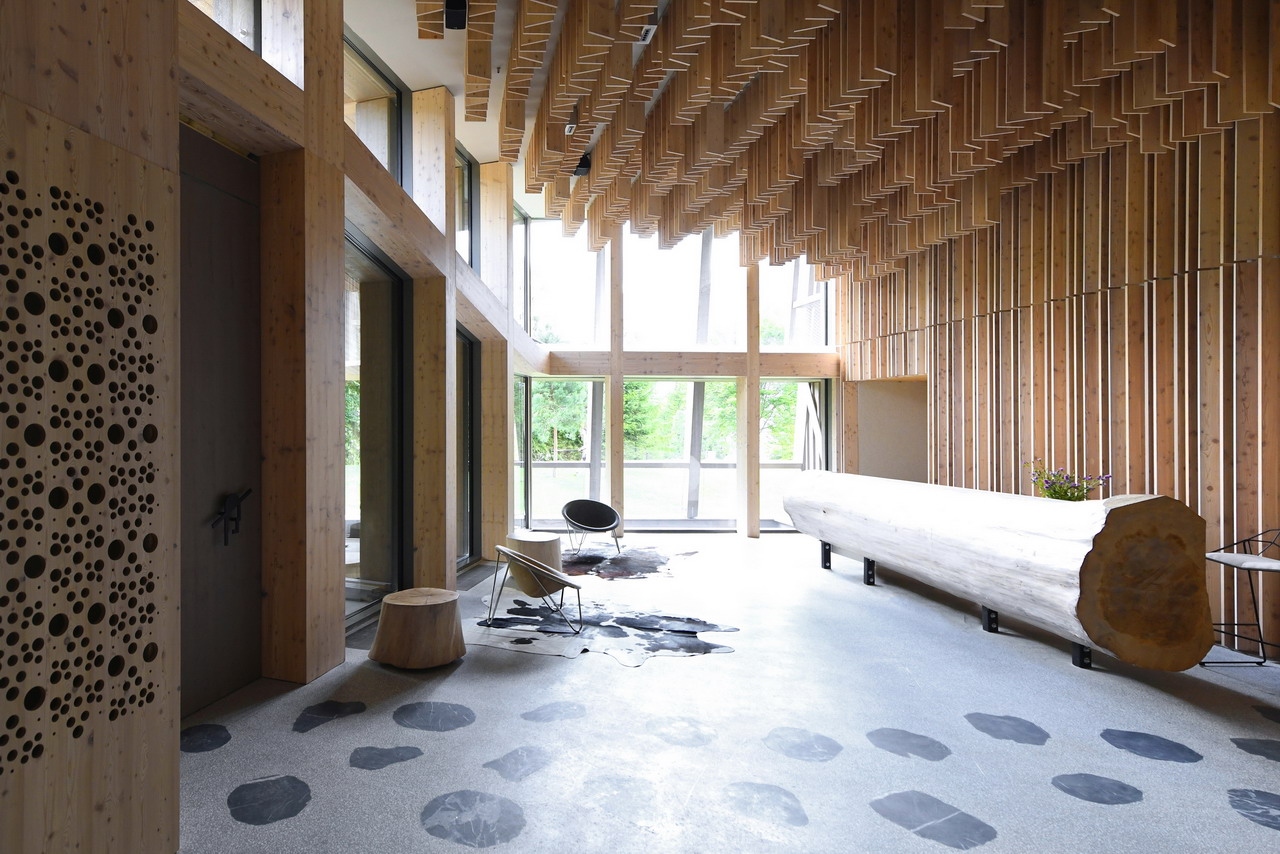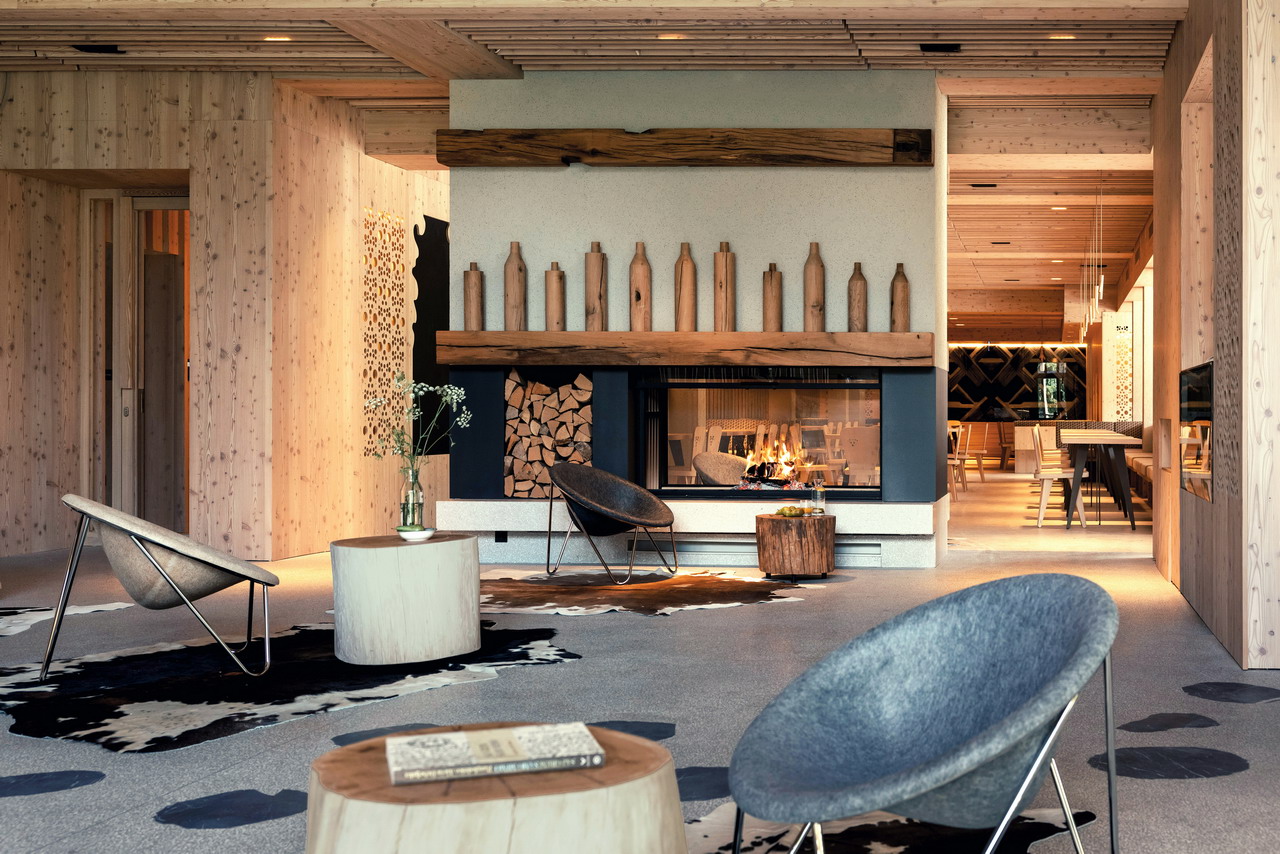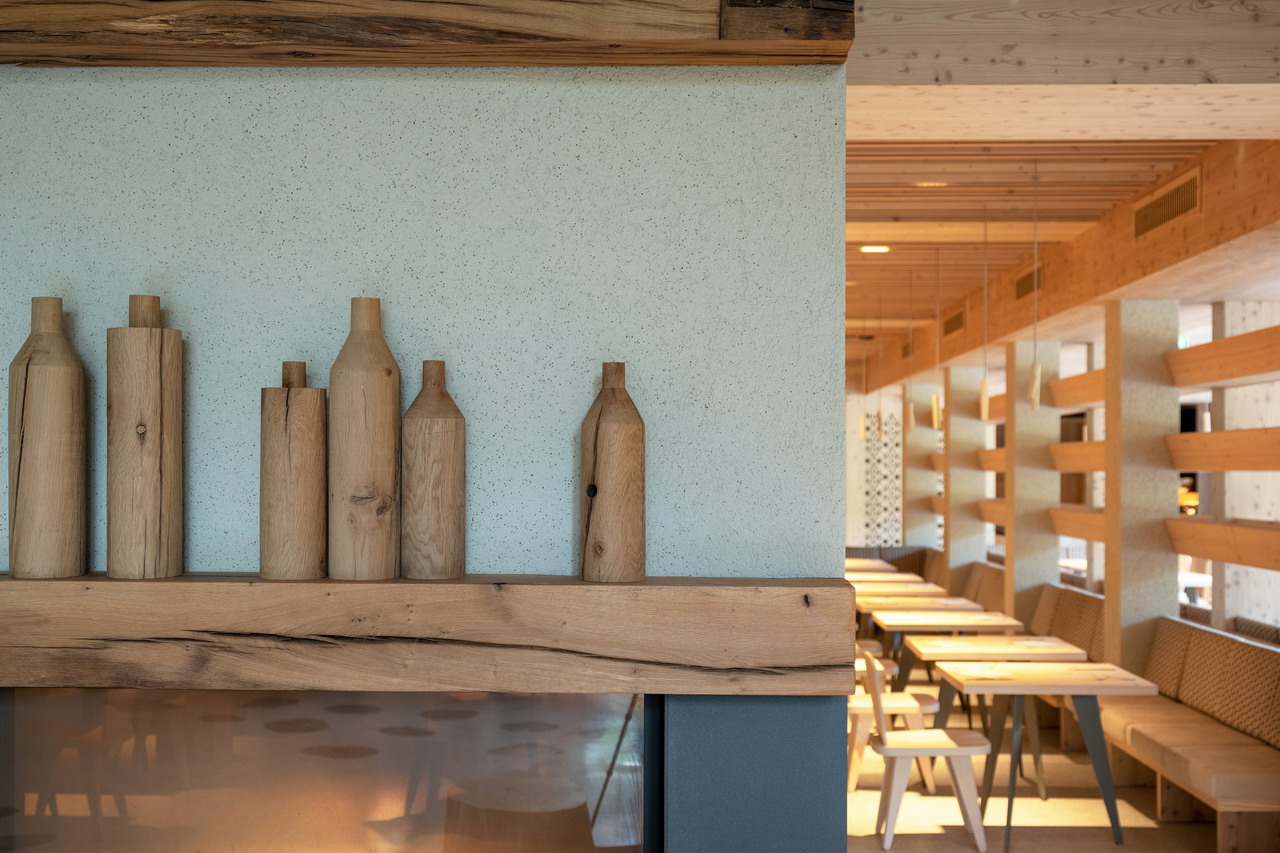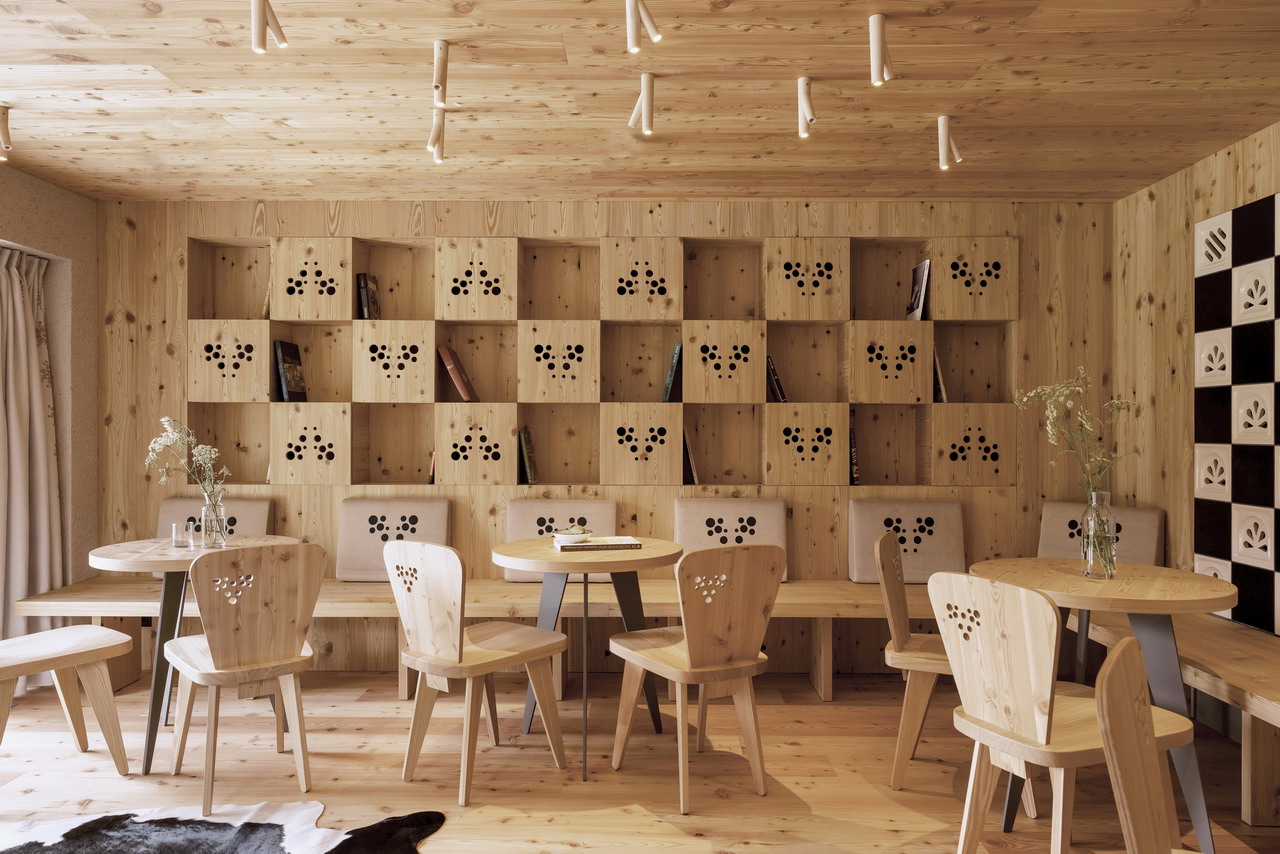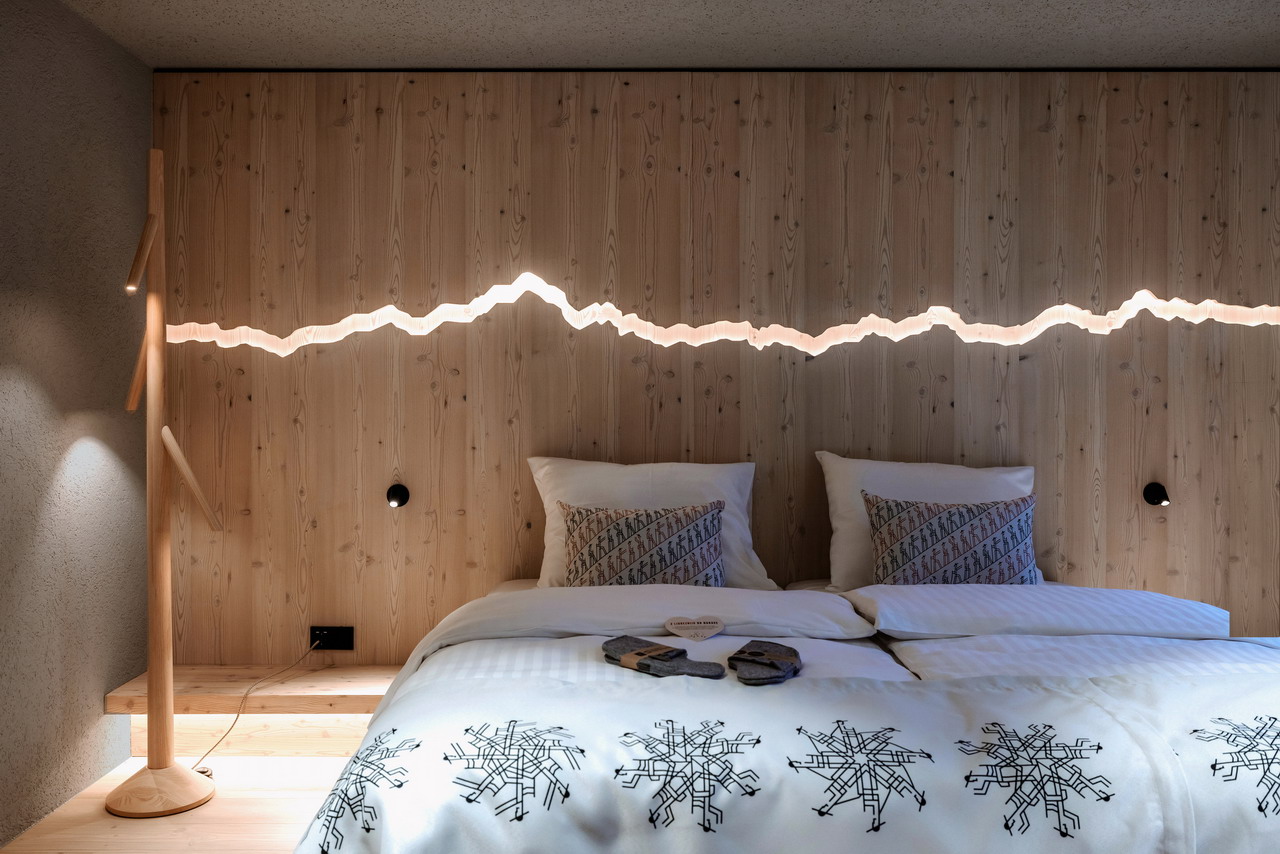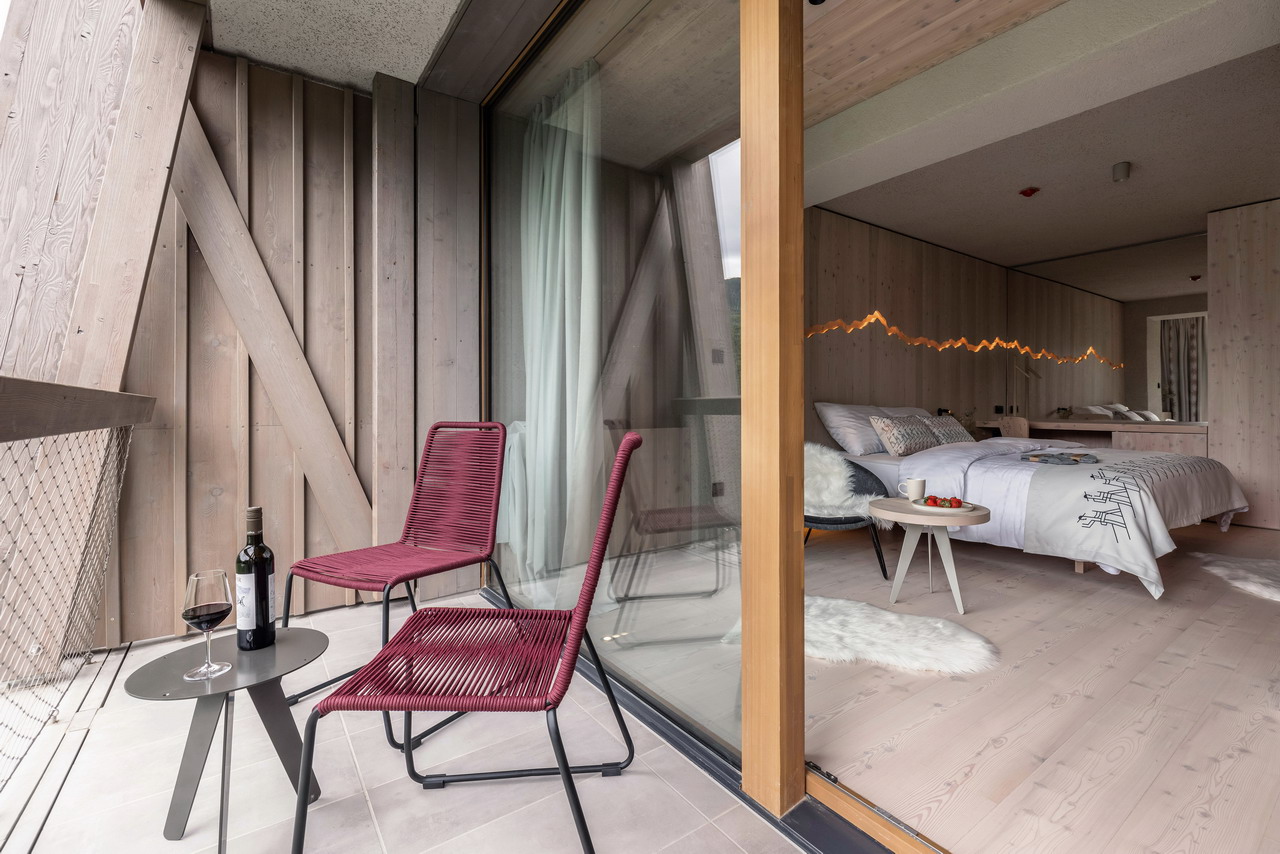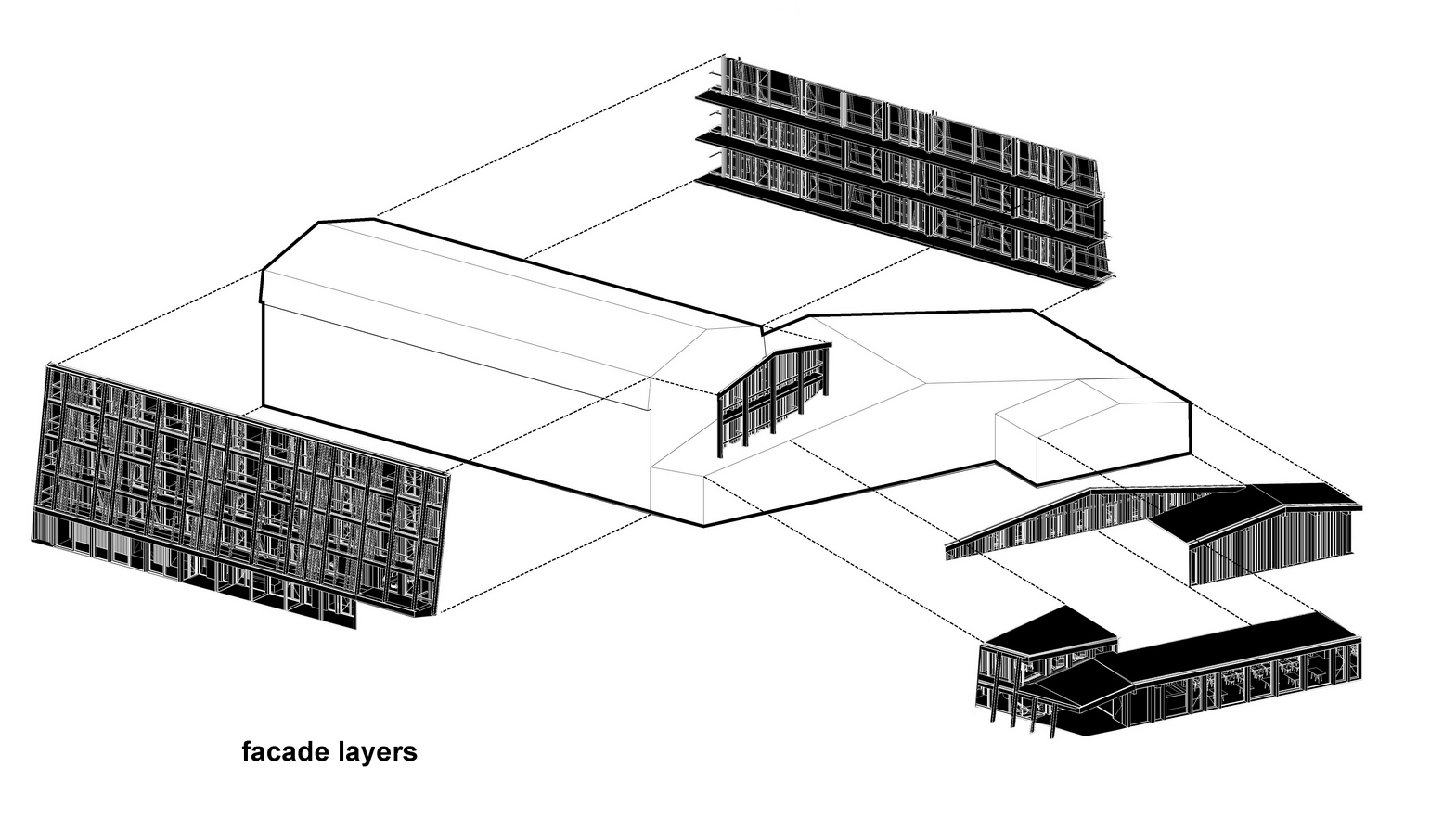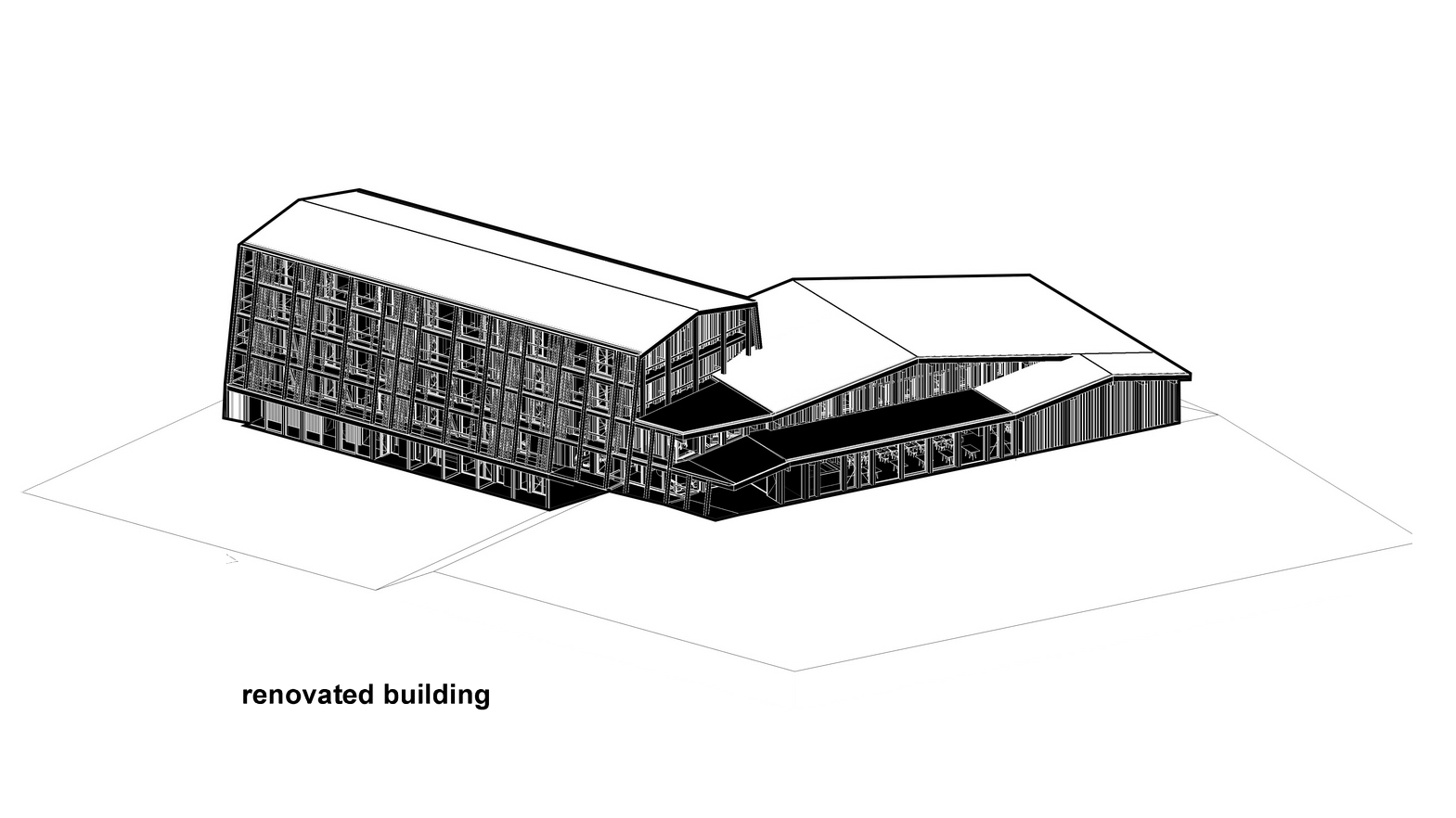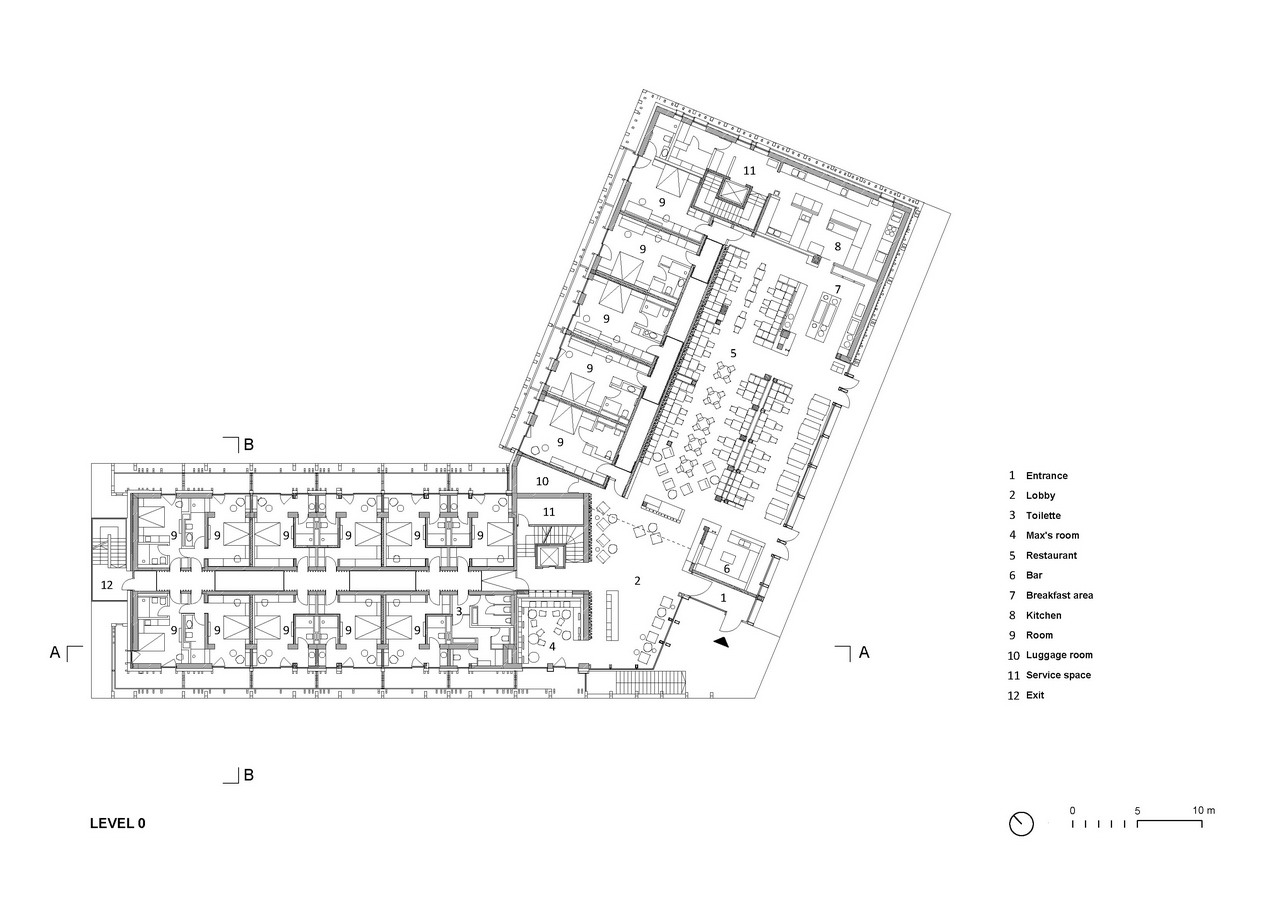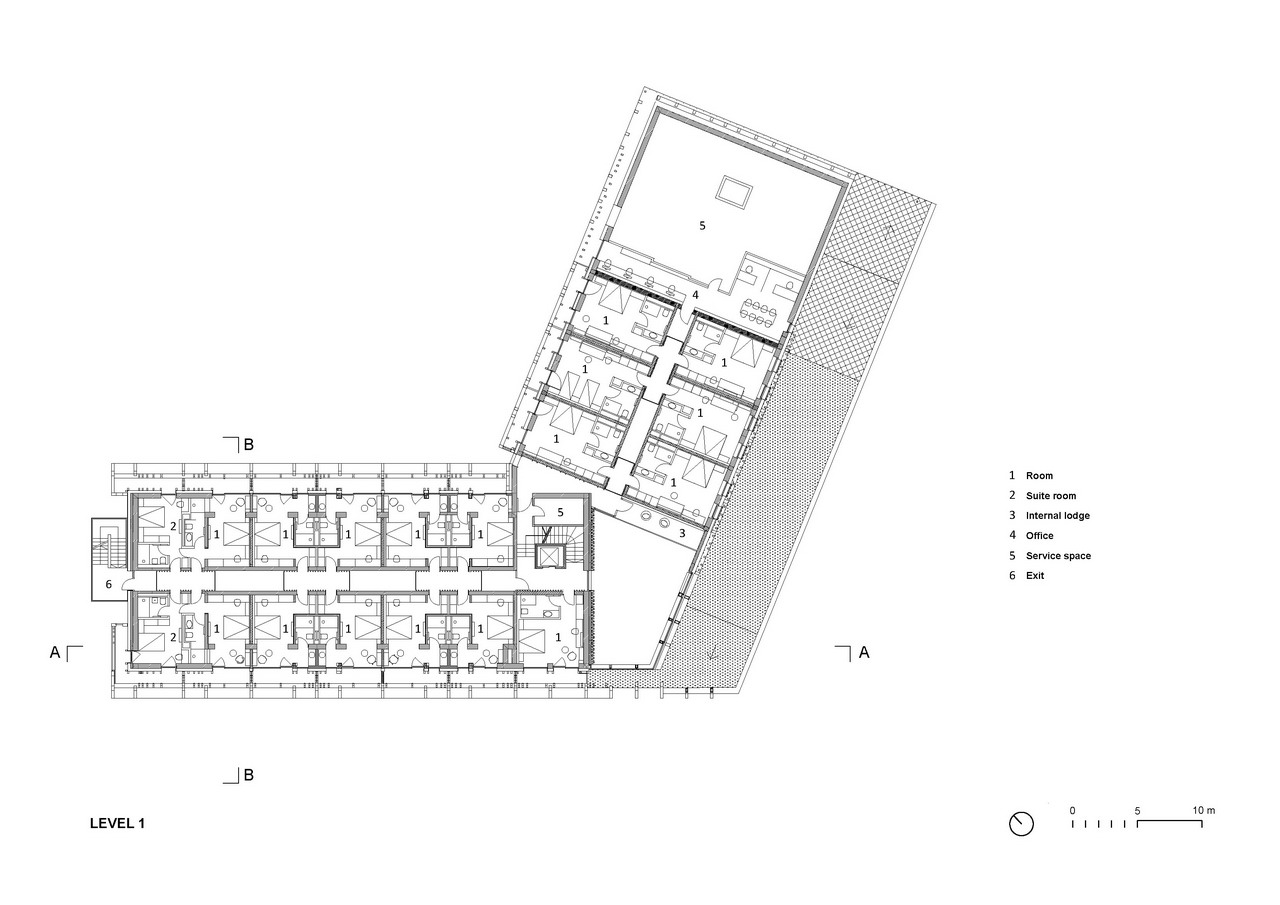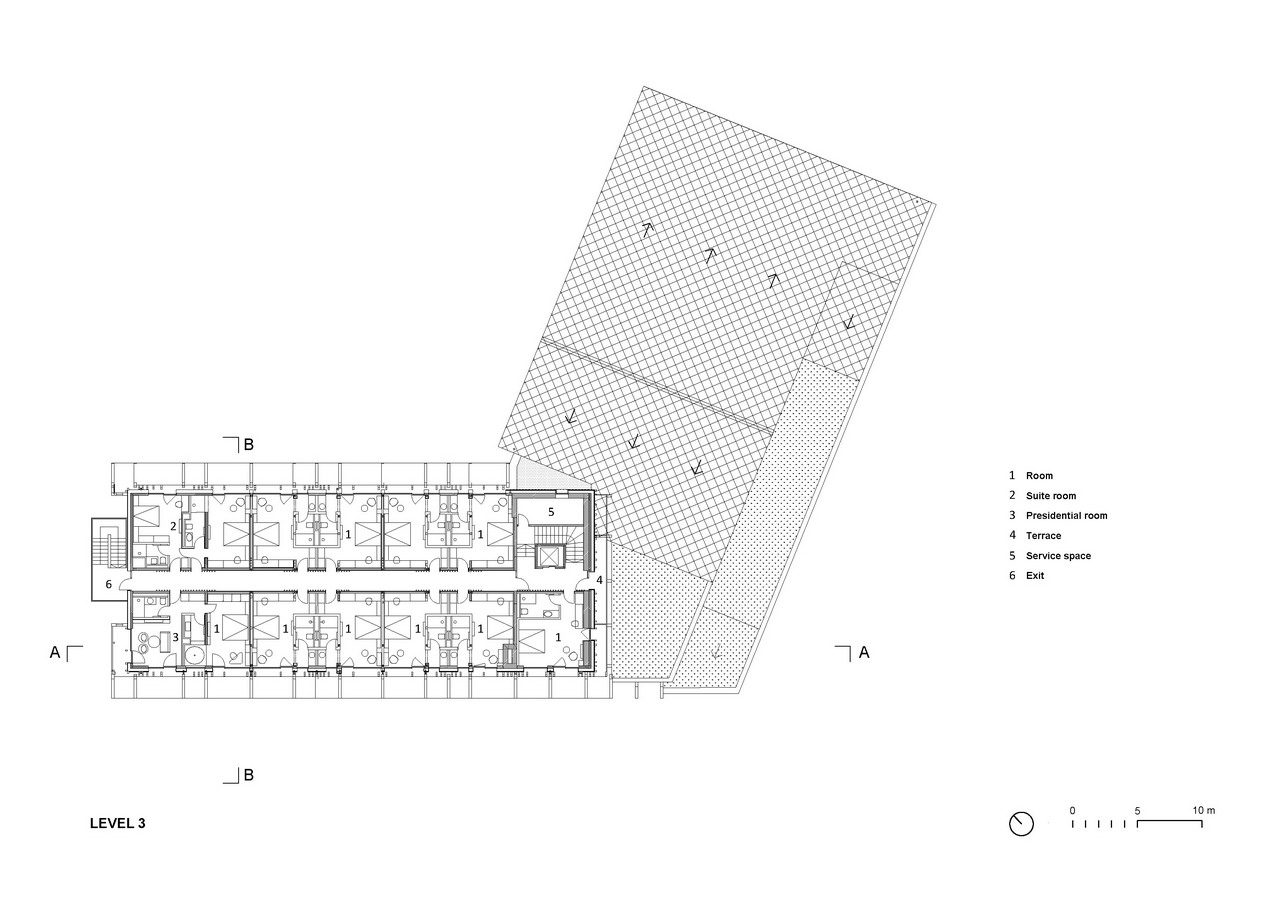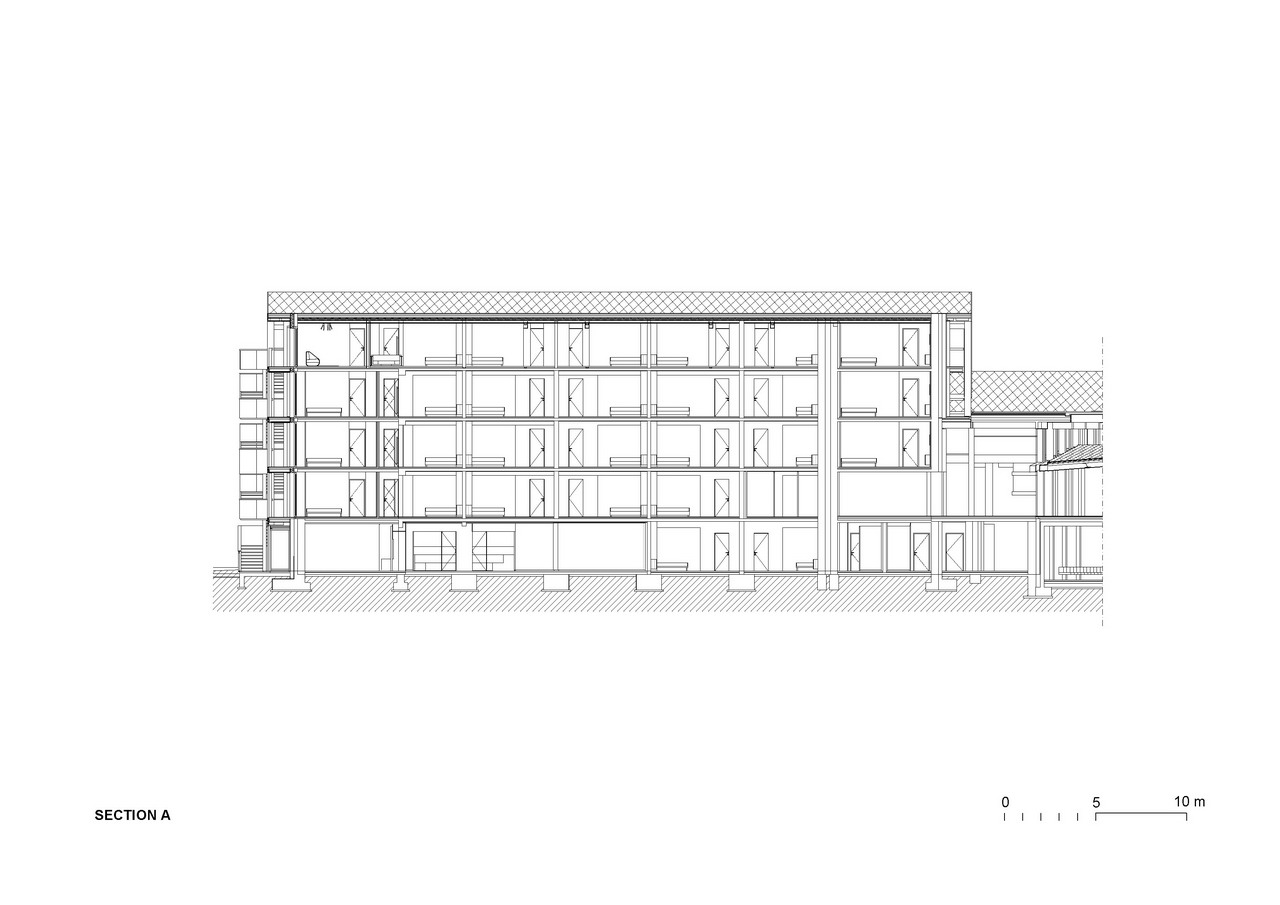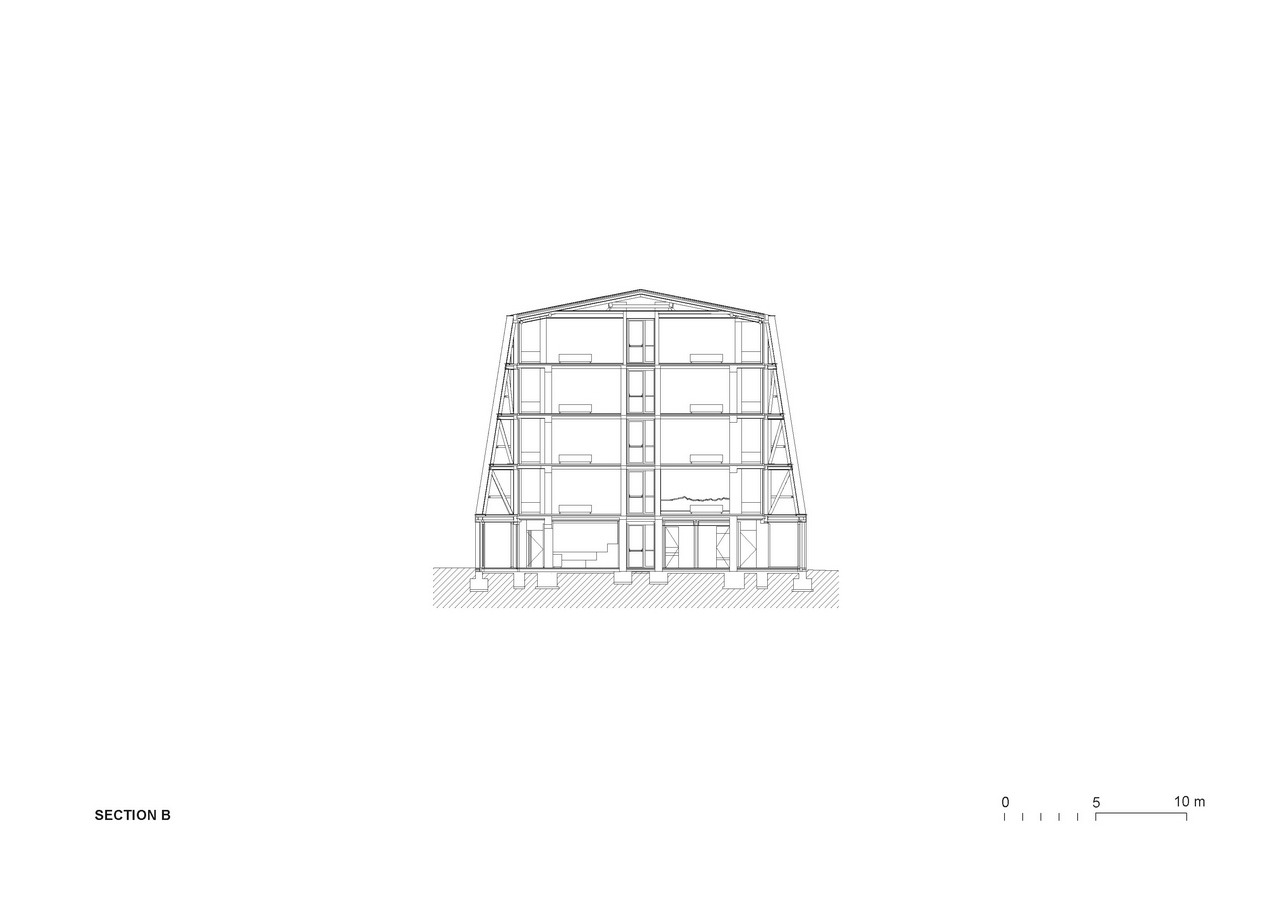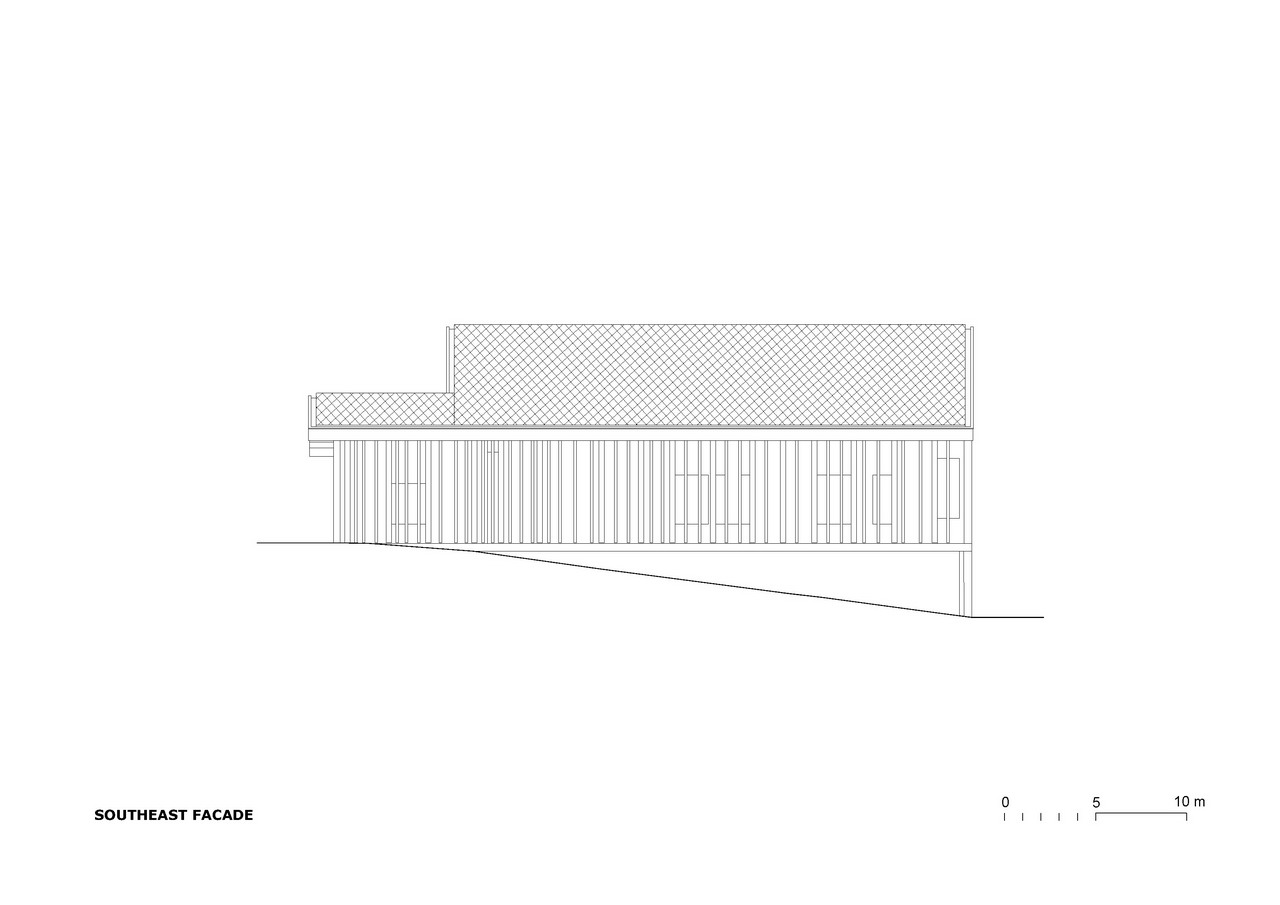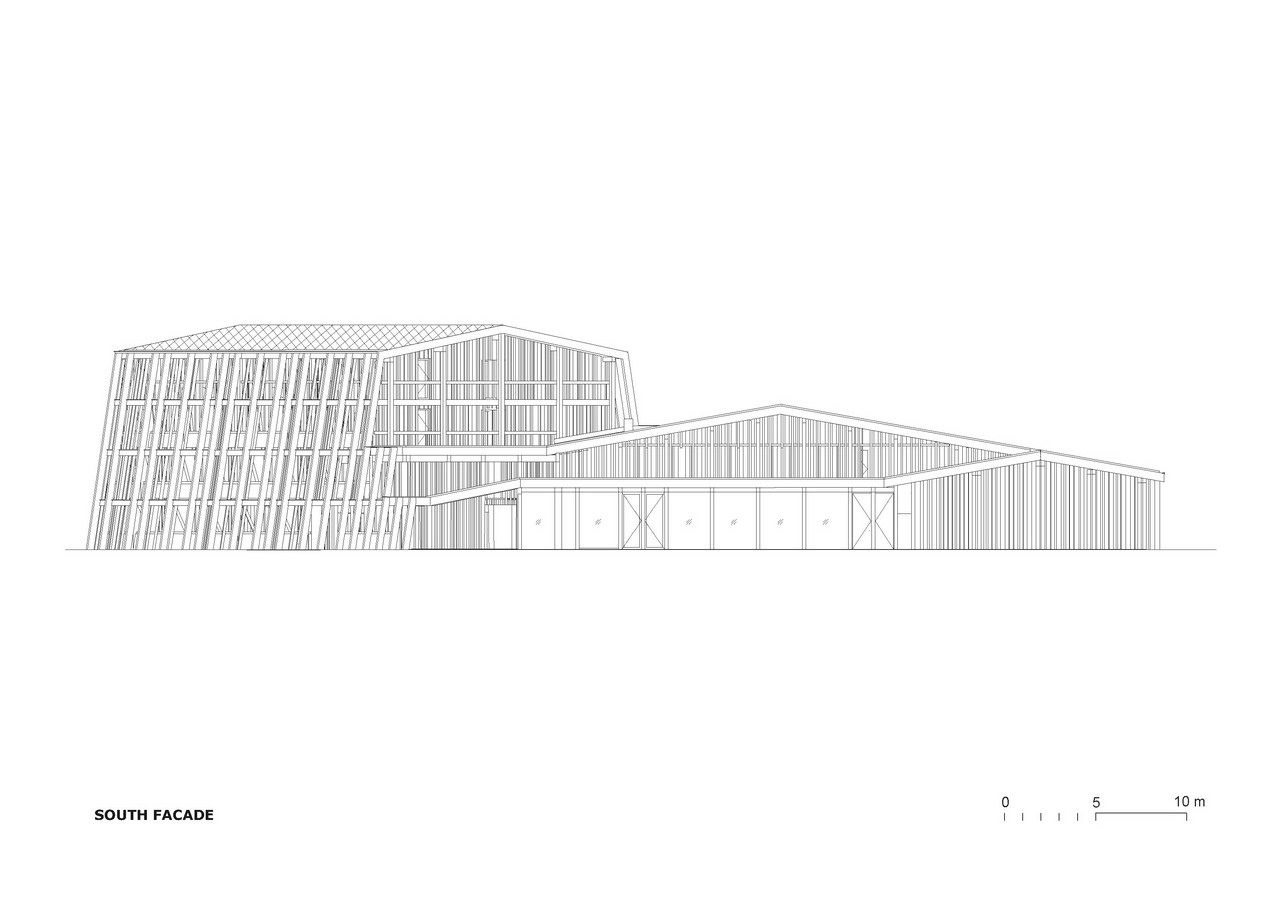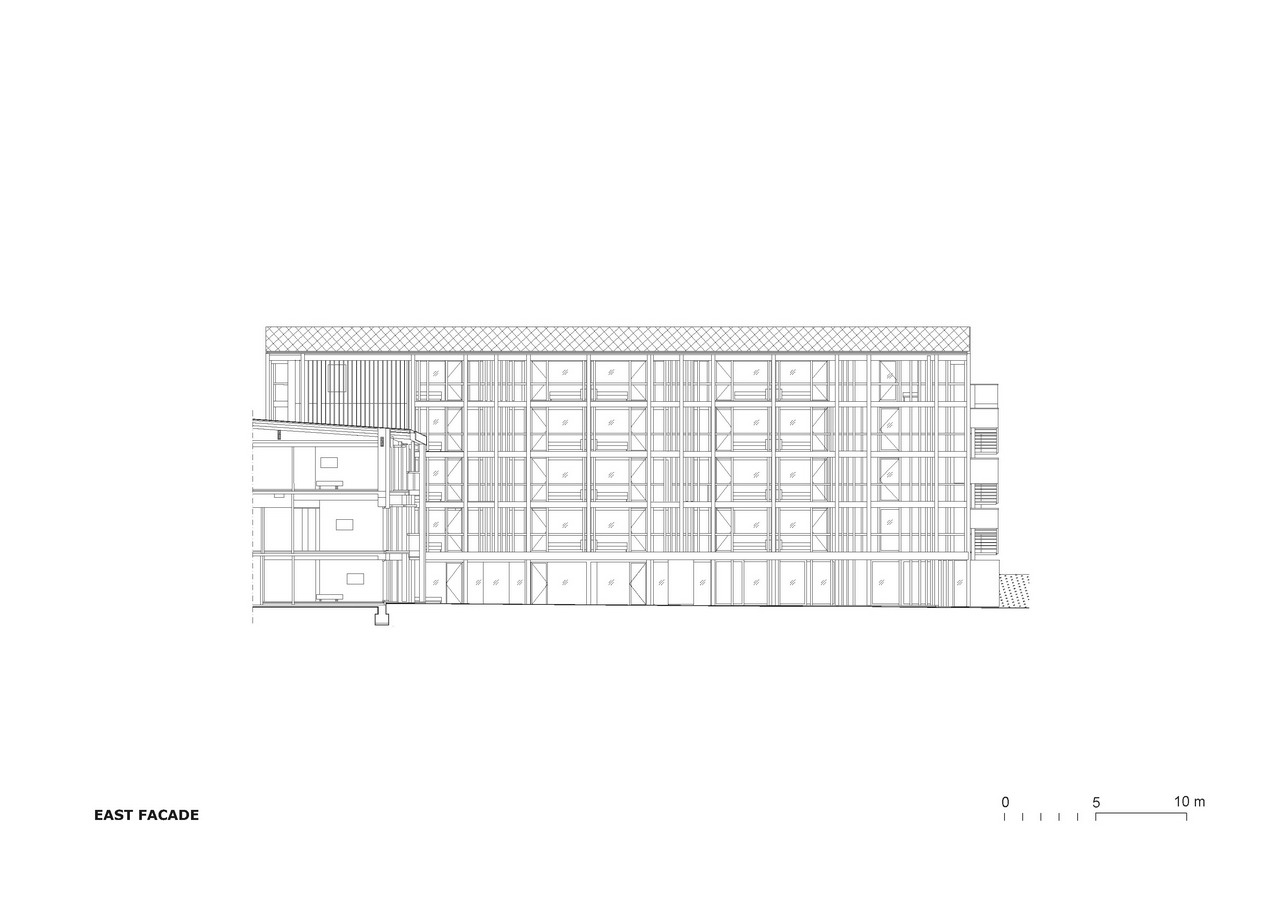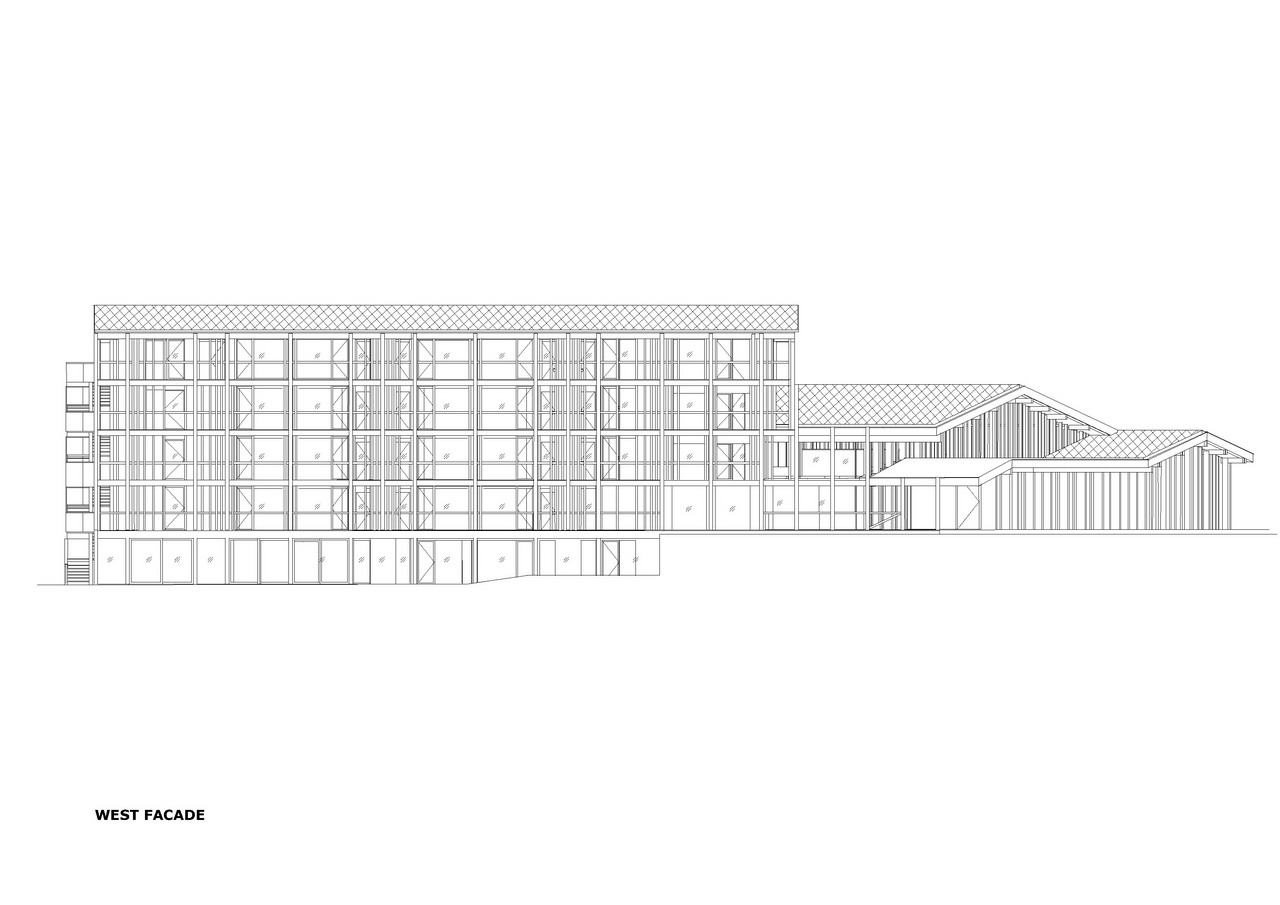HOTEL BOHINJ
Hotel Bohinj, the former Hotel Kompas was built spontaneously over the last three decades, without thinking about its final appearance. It is raised on a plateau, which gives it a special intimacy, with views of Lake Bohinj, the mountains and the church of Janez Krstnik. The new owners of the hotel decided for radical overhaul including structural reinforcem, interior refurbishment and suistainable renovation. The basic volume was preserved with a new structure envelope of wooden framework. As well as creating new balconies and changing the overall massing, the frames are providing structural protection against the region’s frequent earthquakes as well as incorporating gutters, wires, lightning rods and recuperation outcomes. Larch wood cladding covers other new exterior elements, giving the hotel a naturally patinated appearance. The entrance façade is complemented by an extension with a new, larger double-height lobby, an entrance canopy and restaurant. The triangular gabled roofs of old building already had recognizable elements on the entrance façade the inspired the new composition of triangulated elements that create dialogue with the mountain tops in the background. The façade and new architectural elements are inspired from local vernacular architecture details and crafts. The interior consists of 69 rooms cladded in light larch wood. The rooms have a modest local inspiration with patterns, textures and furniture details. They are of different sizes, from double, triple to family rooms with panoramic windows and balcony. Long common corridors represent a walk through the construction of the Bohinj hayrack “toplar”. These traditional monuments of Slovenian craftsmanship stand along the villages around the hotel. The walk to the room offers guests unique experience of walking throught these unique vernacular structures - buildings that are present only in Slovenia. This geometry, recreated on the carpet floor and on the ceiling and wall coverings is not only a design reference, but also a warning. Both foreigners to Slovenian unique specialty as well as locals to protect cultural heritage. Every year, a few examples of this traditional architecture disappear, often collapsing on its own. The common areas include a two-level entrance lobby, a restaurant and breakfast room, a retro-bistro with traditional terracotta stove, a small congress hall and club with wine shop. The interior has unique design of the equipment produced only with local craftsman. Chairs, benches, curtains, upholstery, even lights are unique products of Slovenian companies, which were interpreted in its own way just for this hotel. The lights, resemble branches and give a very intimate light, chairs are from felt produced of recycled plastic bottles. Larch wood is main material of walls, furniture and ceiling, all details inspired by local and vernacular. Floors in common areas are made of terrace that has light grey colour of surrounding rocks. Large black stone traces leading to the entrance and the hotel lobby remain in the memory of the famous Mr. Max, the legendary hotel cat, who after previous hotel was closed for renovation disappeared into an unknown place. The graphic represented on fabrics, glass and walls along the hotel represent the silhouette of four brave men who were the first that conquered Triglav, Slovenian highest mountain on August 26, 1778. Their story is a red thread throughout the hotel, symbolizing courage and bravery. Alongside Triglav, it represent a strong symbol and the identity of Bohinj. With their story of the first approach, guests will return to the past, to local roots and identity, and create a connecting circle between reviving history and bringing the local spirit. The hotel also boasts a small wellness center with an outdoor pool with heated water and on the lawn, the old pool was replaced by large fireplace and space for social events. This encourages guests to swim in the lake, which due to its fluidity with river changes the water at leat three times a year and is considered one of the cleanest waters. In order to once again feel the beauty of the night in the hilly places and the starry sky, the lighting of the hotel is restrained. The external arrangements took into account the guidelines of the Triglav National Park which dictated the indigenous growth. Part of the renovation of the hotel was also energy rehabilitation. When planning energy use, the strict rules on efficient use of energy are taken into account. Class A2 is achieved in accordance with regulations for energy certificates. Heat pumps with geo-sond serve as a heat source, in common areas and some rooms there is radiant floor heating or heating and cooling with the help of convectors. The hotel has central control, which also regulates the quantity of heating and cooling. All lighting is based on energy-saving LED technology, the lights work through sensors which limits the lighting time. All built-in equipment is in the lowest classes in terms of consumption and is designed intimately, especially in accordance with modern guidelines on prevention of light pollution. As the hotel is located in the heart of the Triglav National Park, this is even more important, as it protects biodiversity and enables the coexistence of all nocturnal animals and organisms. *summary The hotel has 69 hotel rooms, a lobby with a café, a restaurant, a wellness center with a small outdoor pool and a conference hall and a club with a wine shop. The rooms are mostly double, some have the possibility of a third bed and range in size from 26m2 to 30m2 mostly have balconies or terraces. Some rooms are family rooms with the possibility of merging, and on the top floor with a view of Triglav there is a presidential room.
Read moreOFIS arhitekti Rok Oman Špela Videčnik Borut Bernik Rok Vrenko Giulia Sgro Technical team Structural engineering: Milan Sorč, Project PA d.o.o. Mechanical engineering: Matej Jelen, Bambi d.n.o. Electrical instalations: Bojan Kralj, Pro-elekt d.o.o. Fire safety: Andrej Fojkar, Fojkarfire d.o.o. Kitchen technology: Gregor Dojer IXA d.o.o. Structural Physics: Matjaž Zupan Accoustic: Saša Galonja Graphic design: Futro
